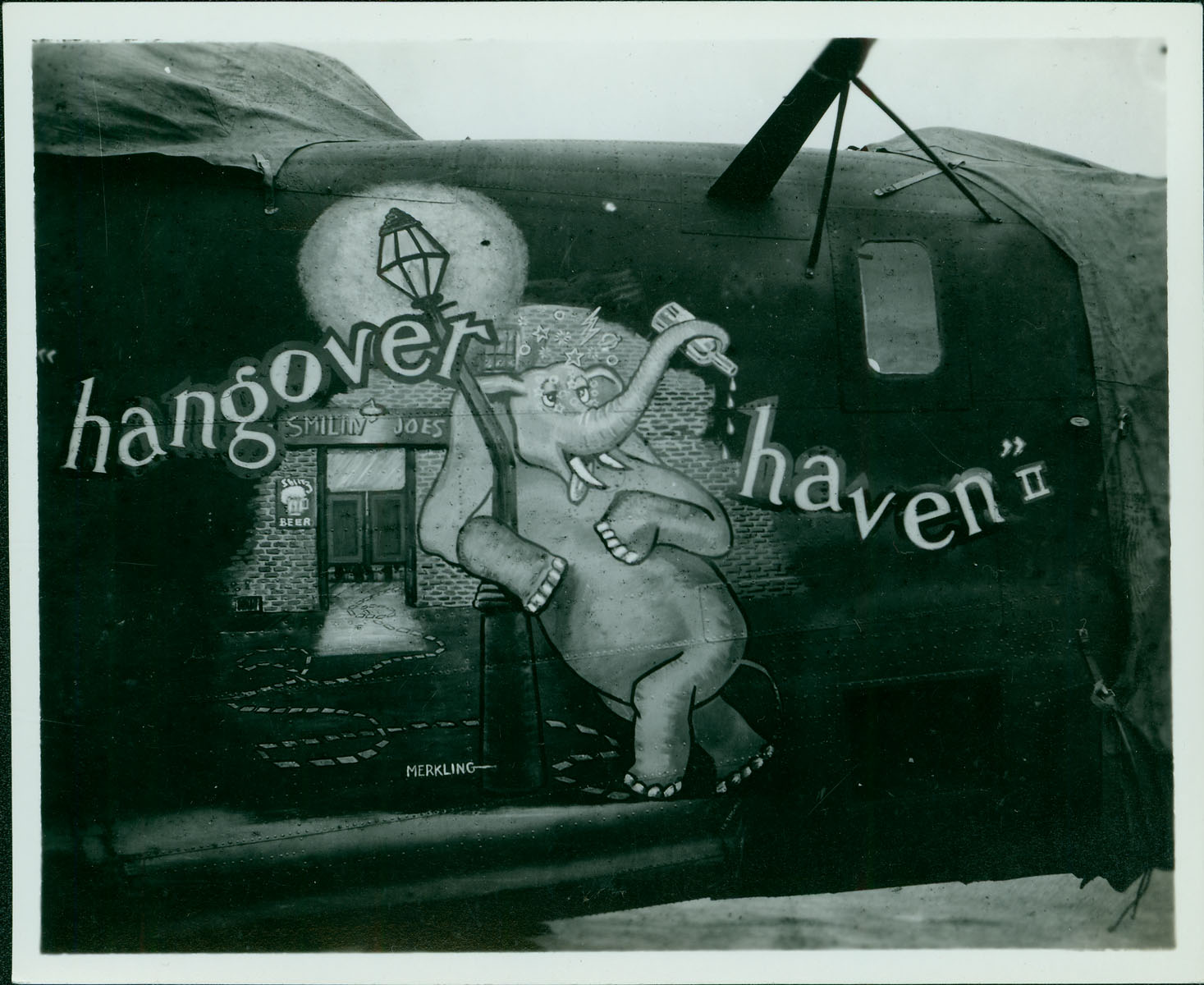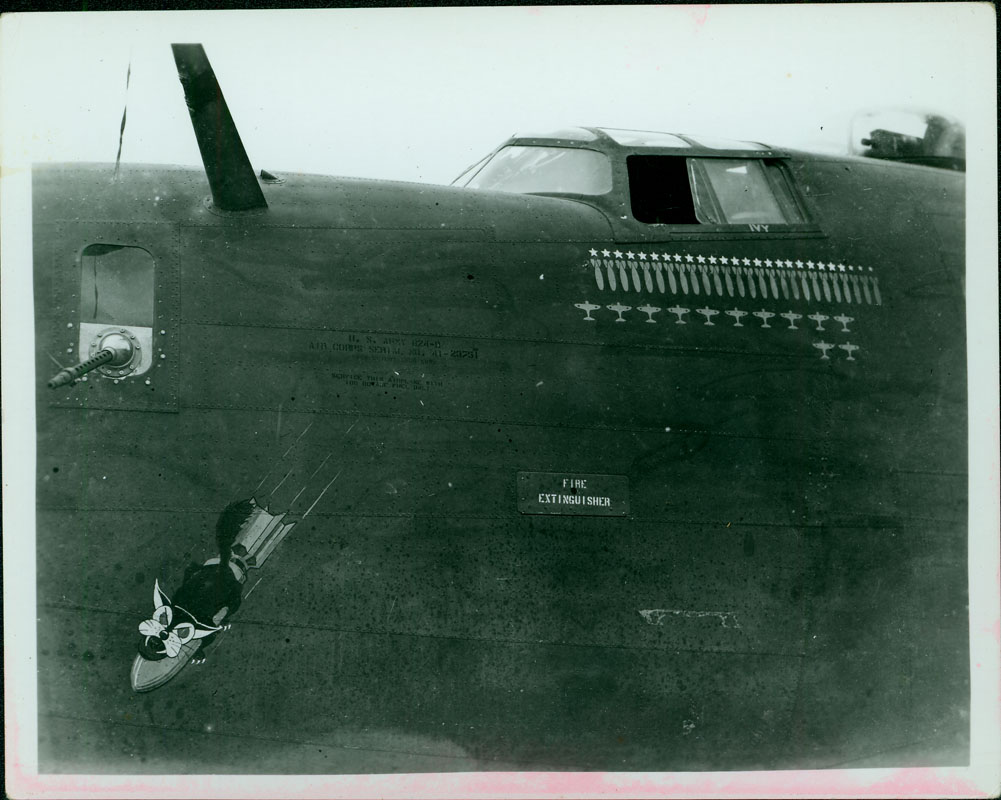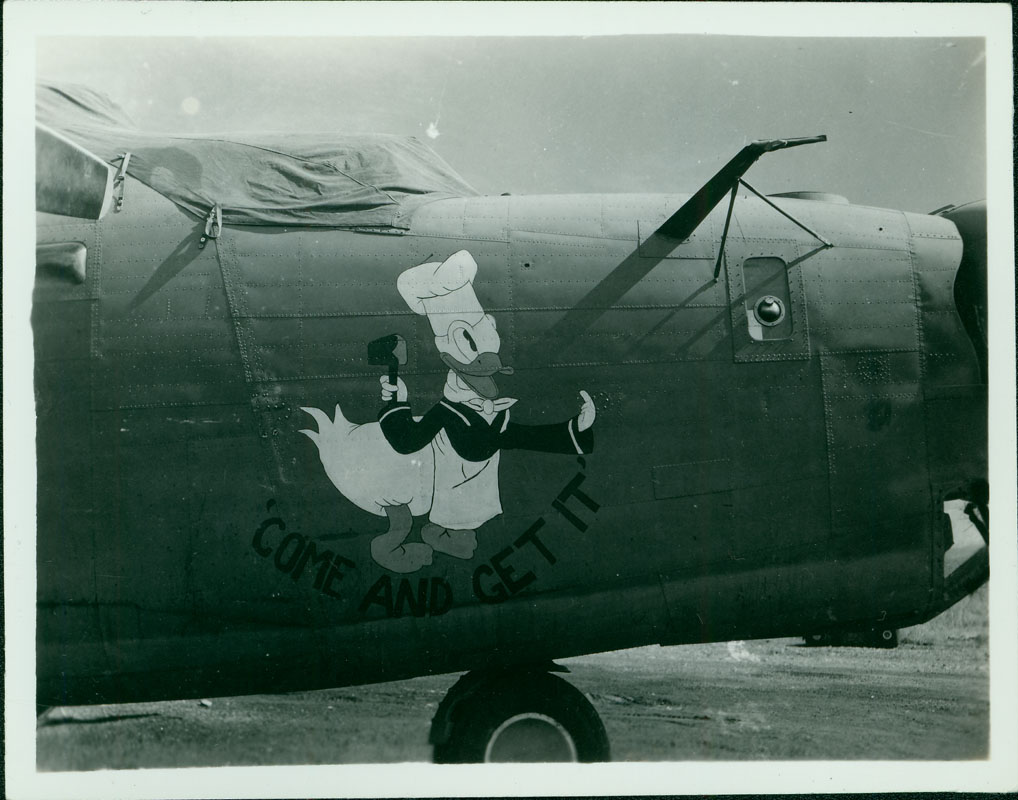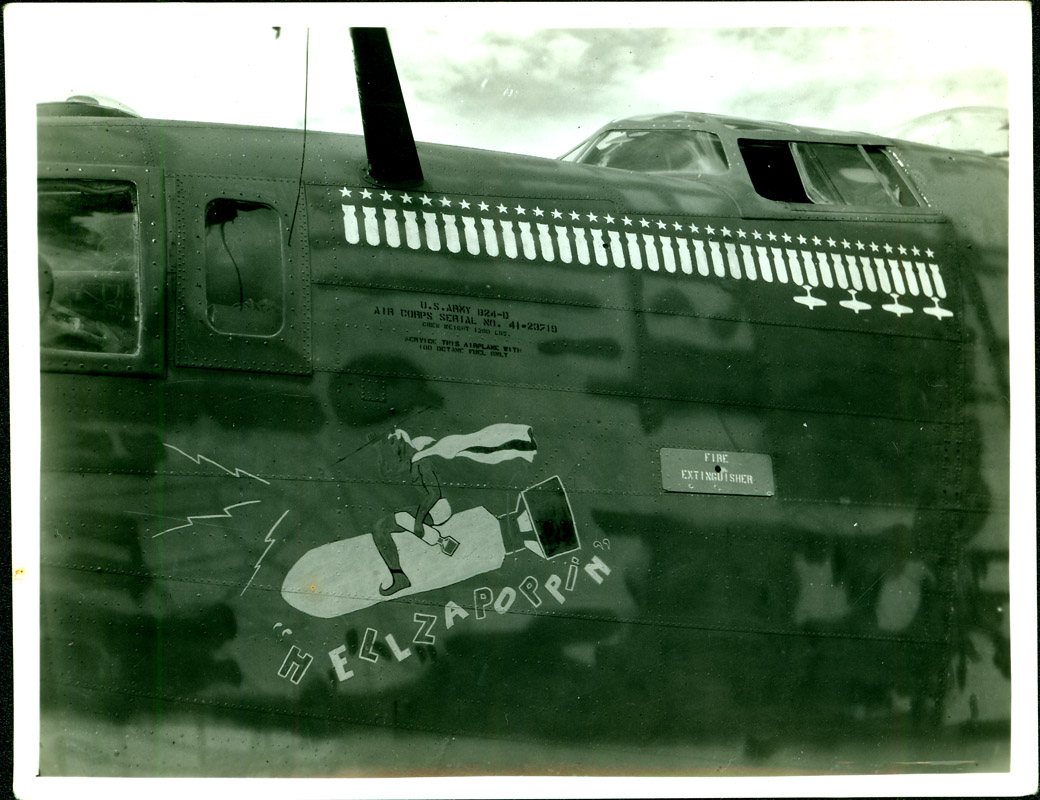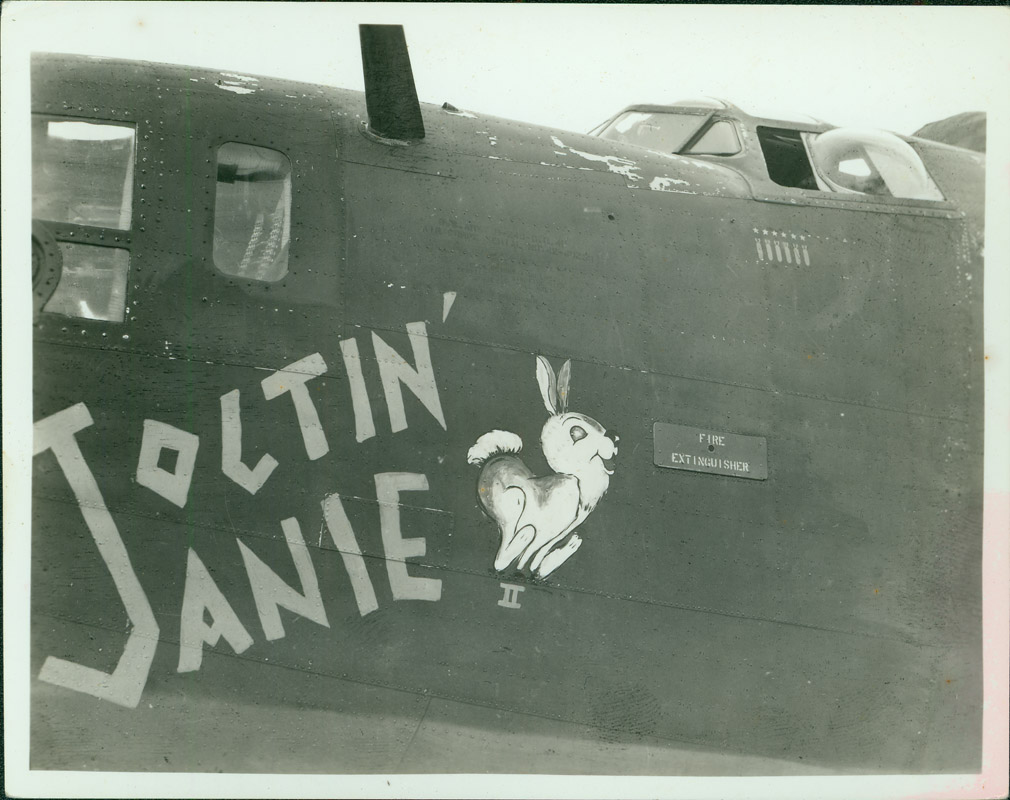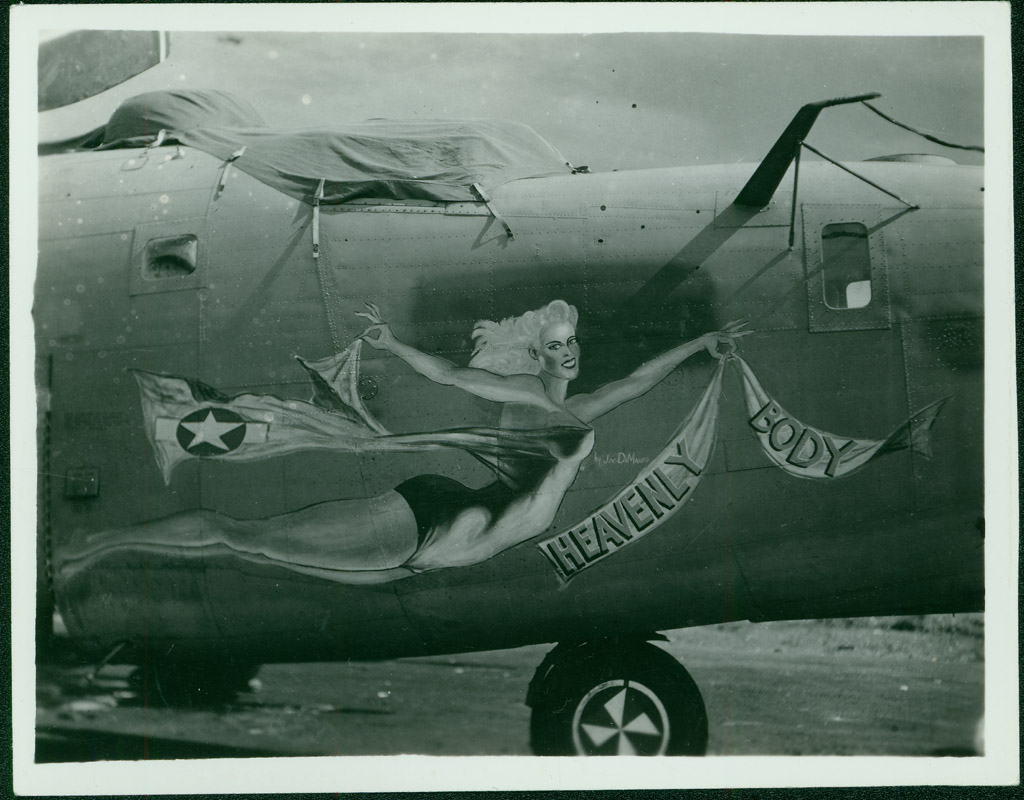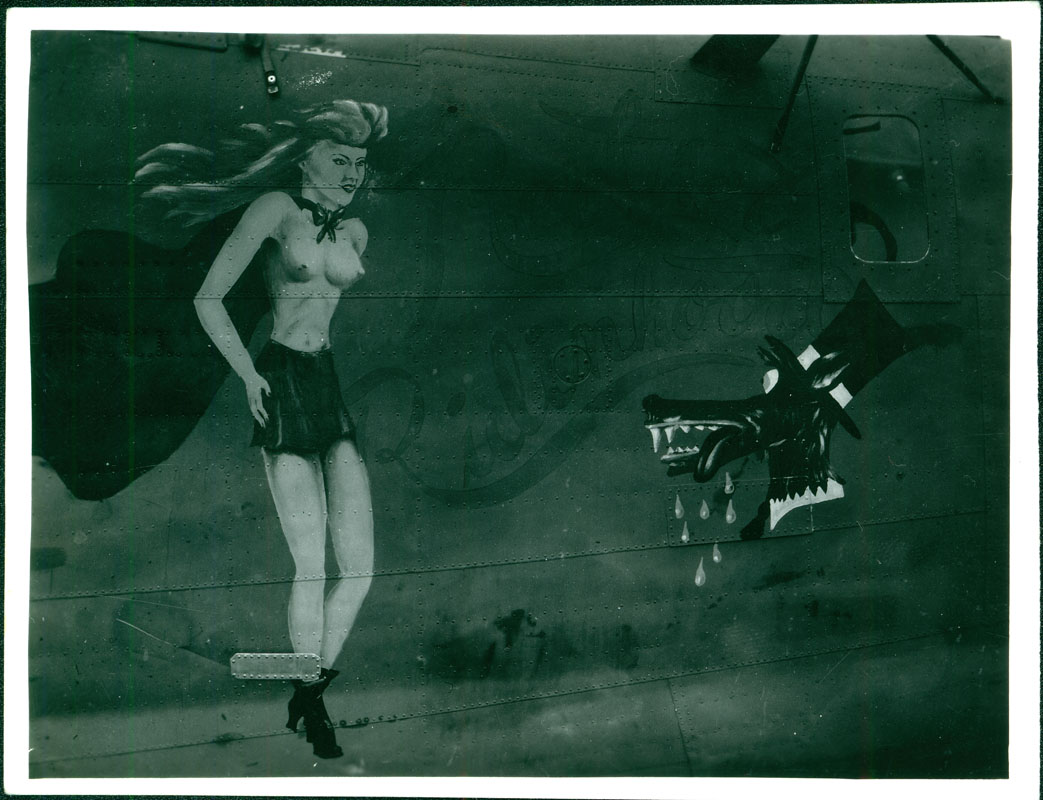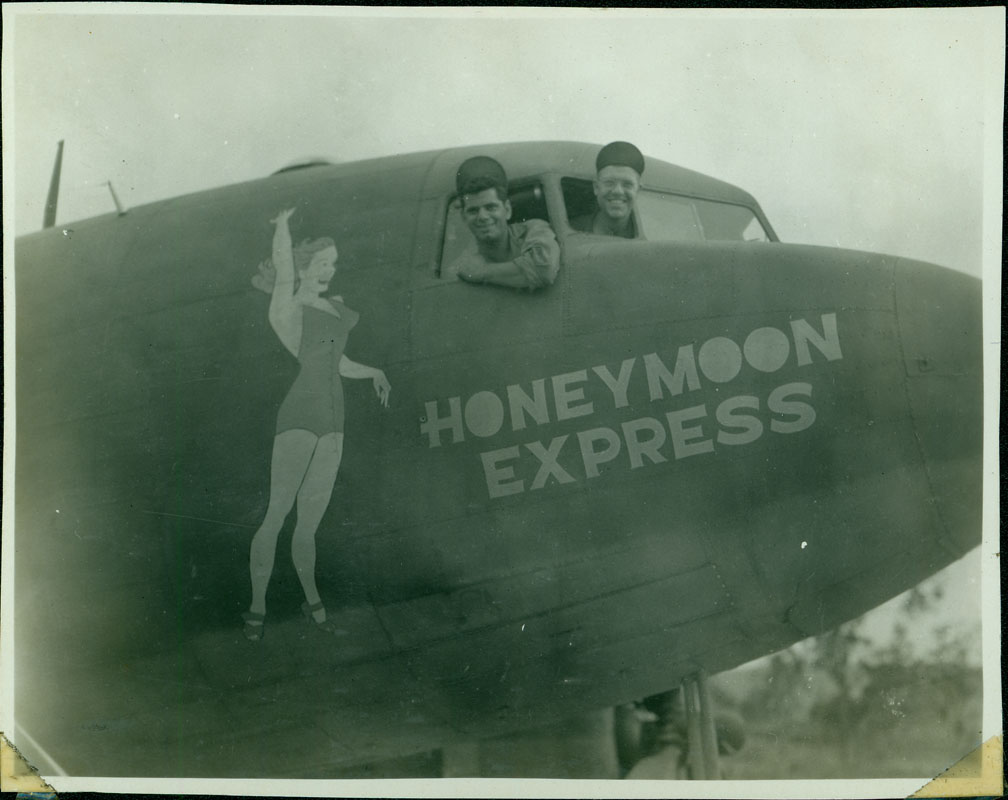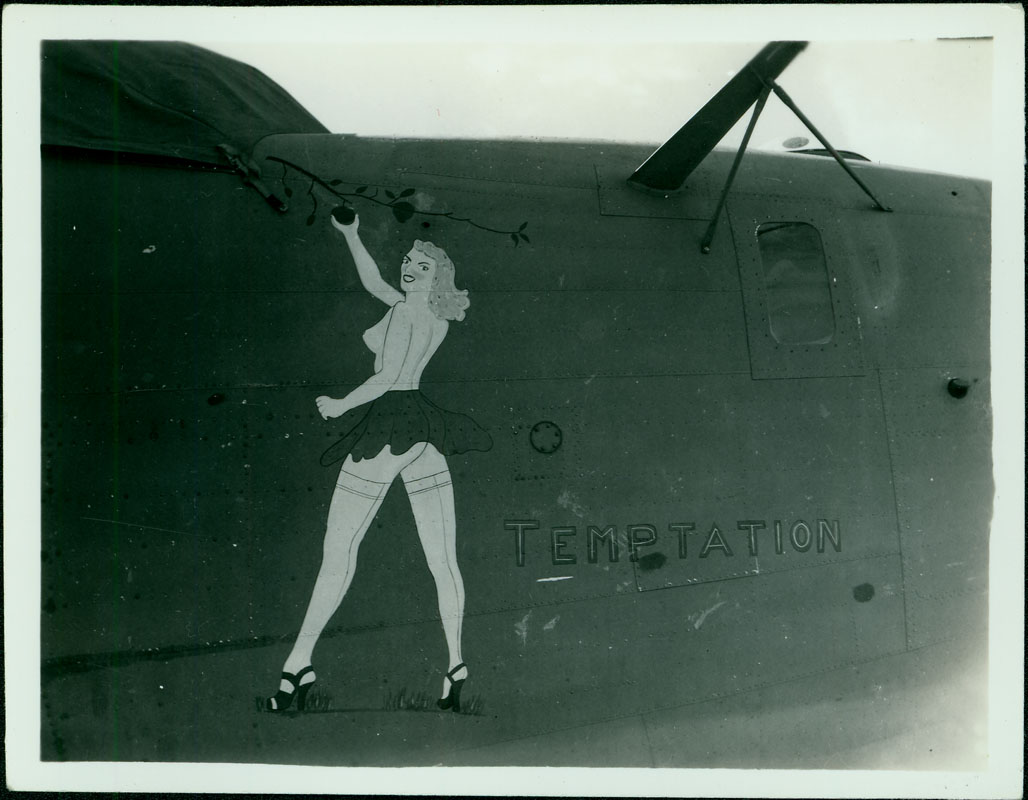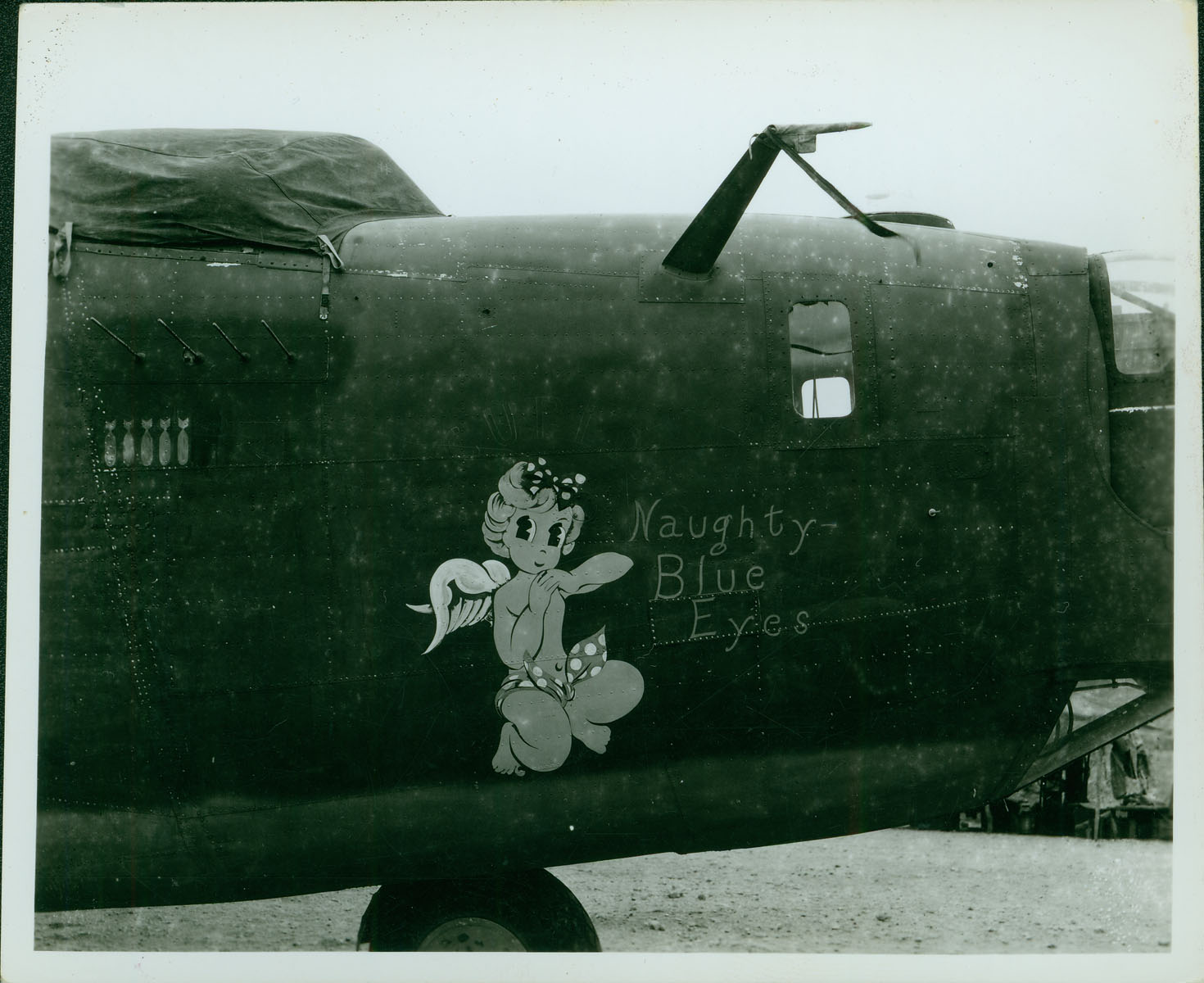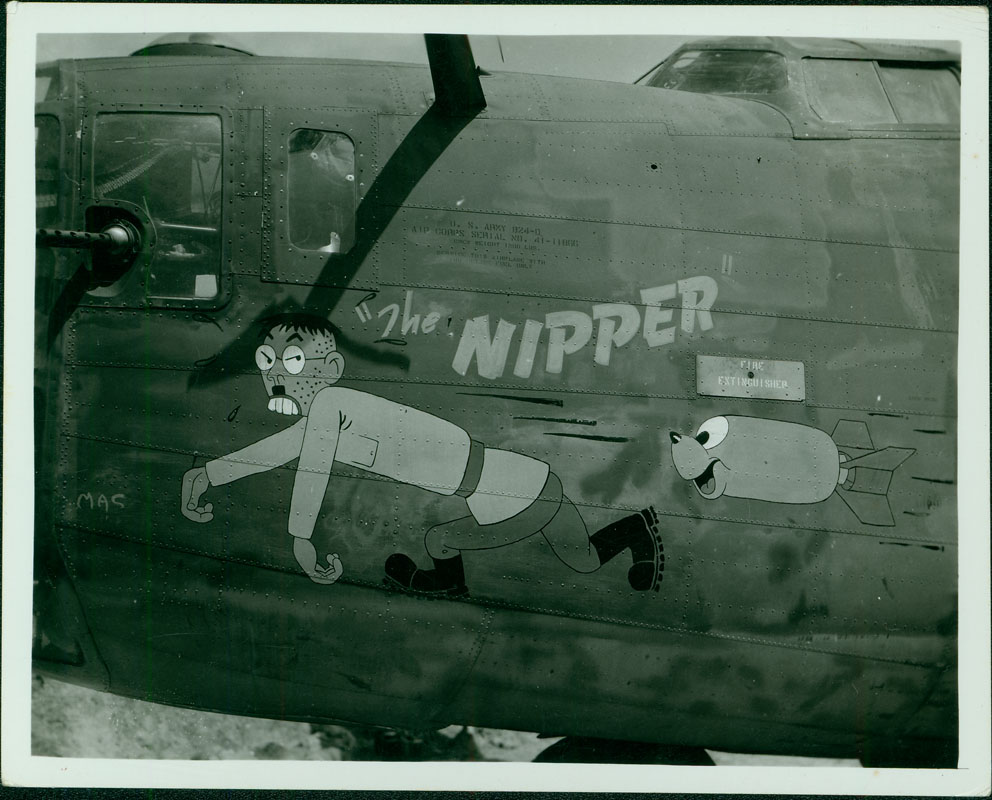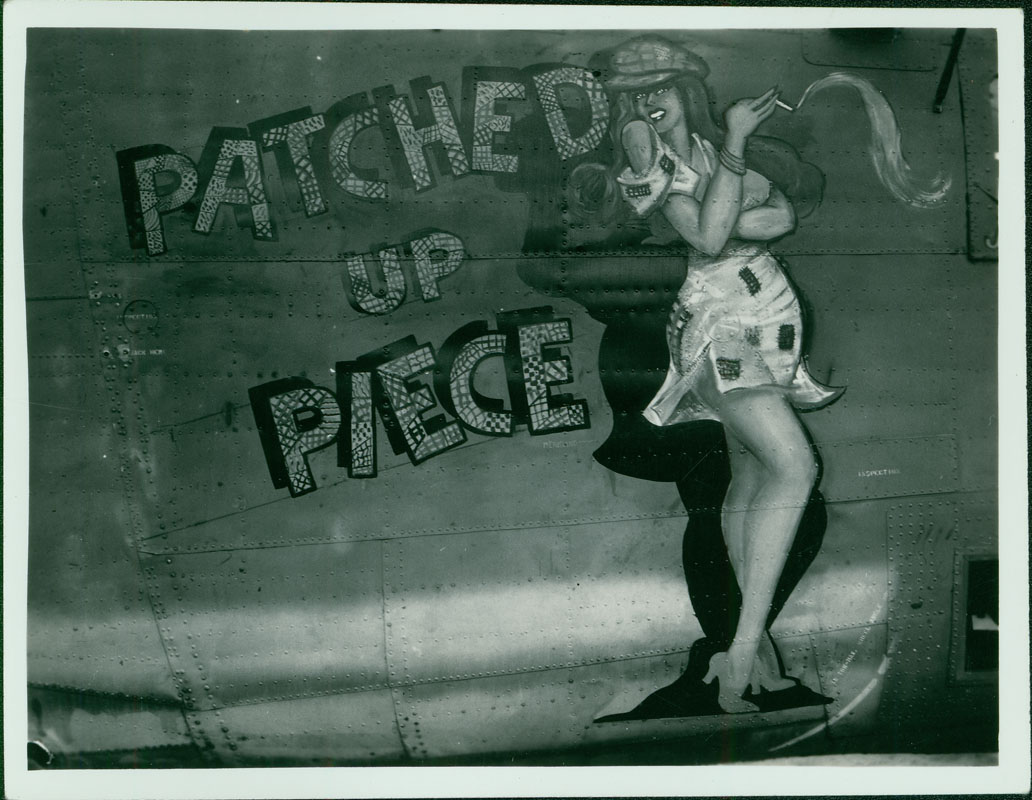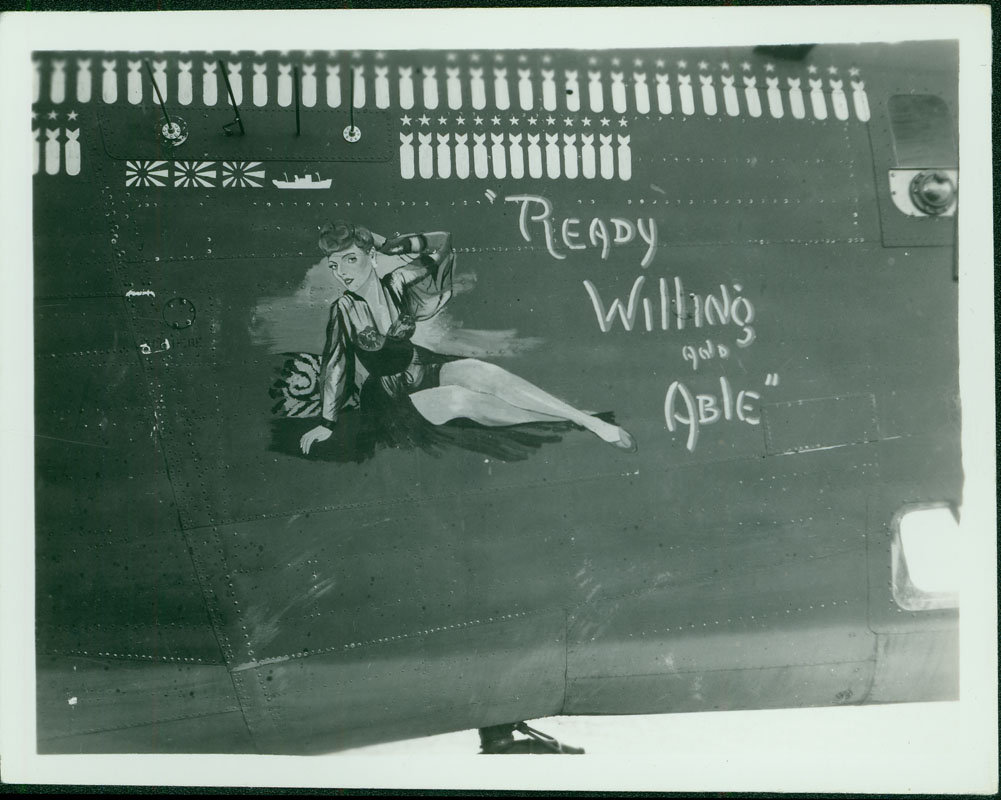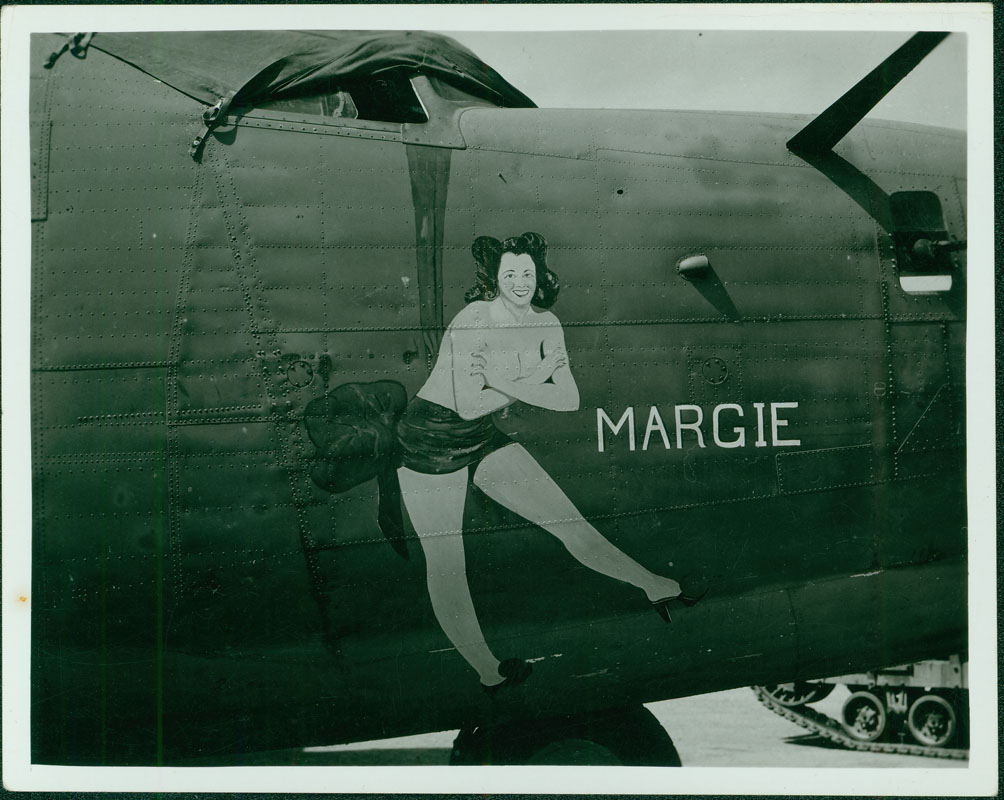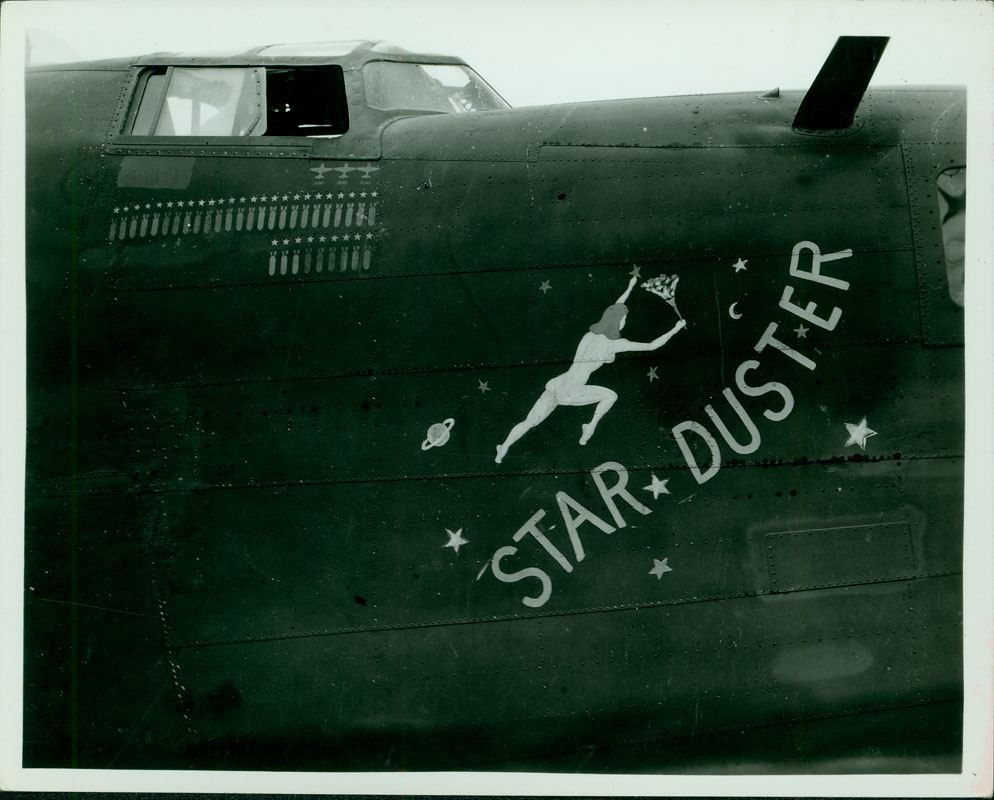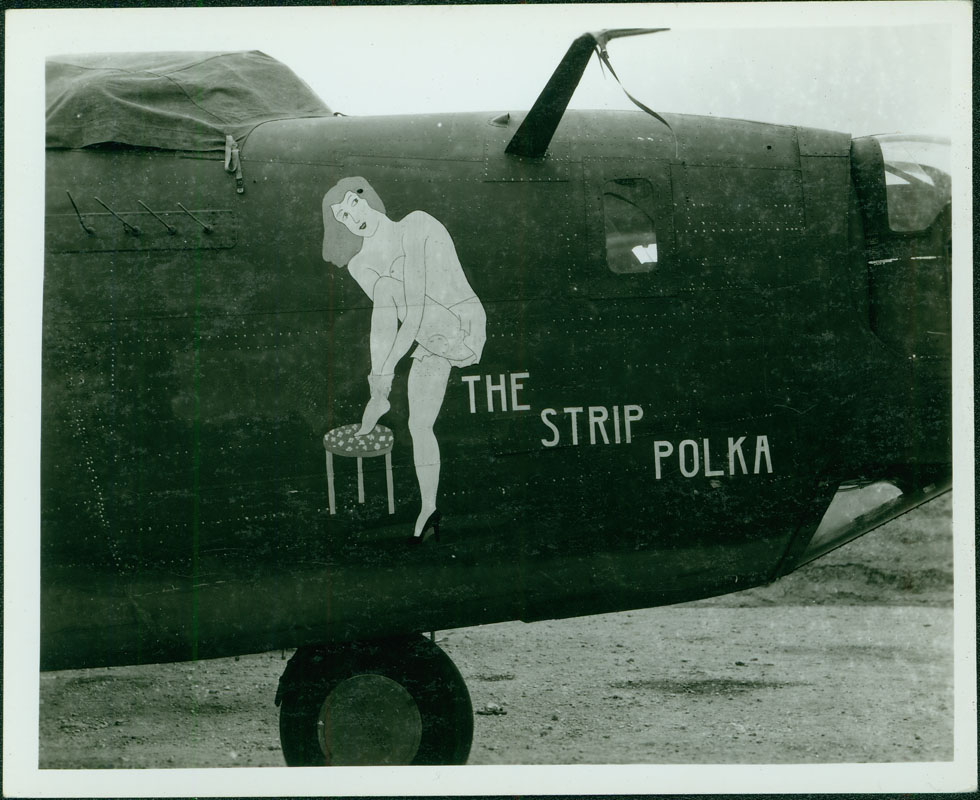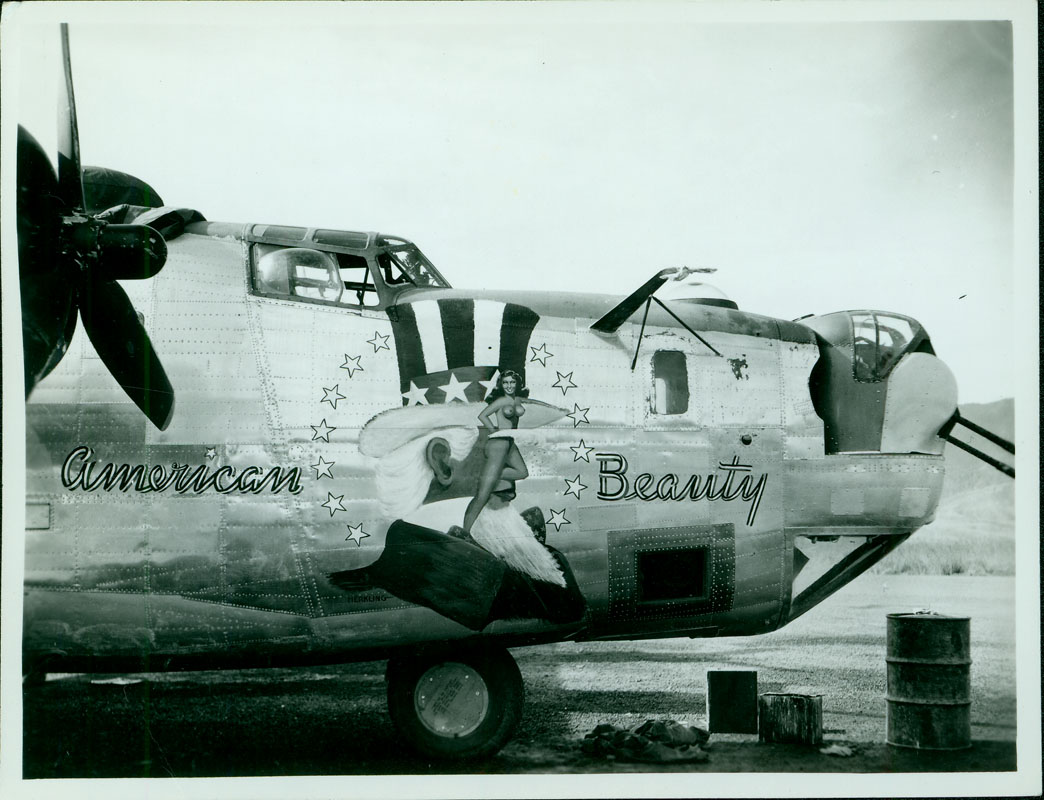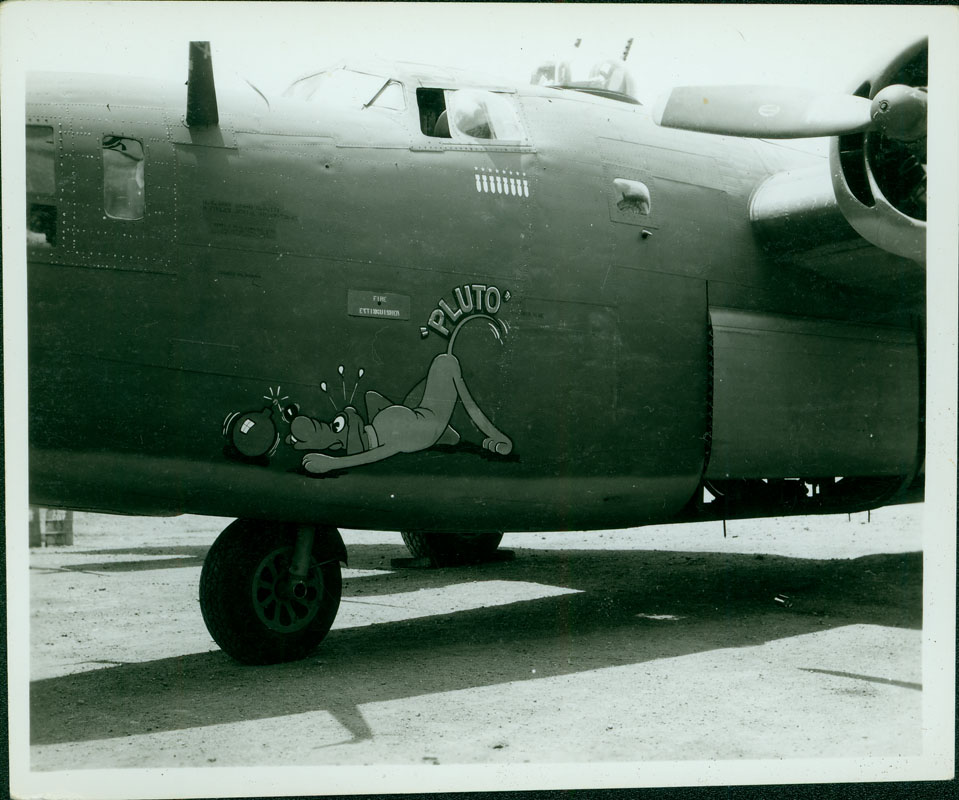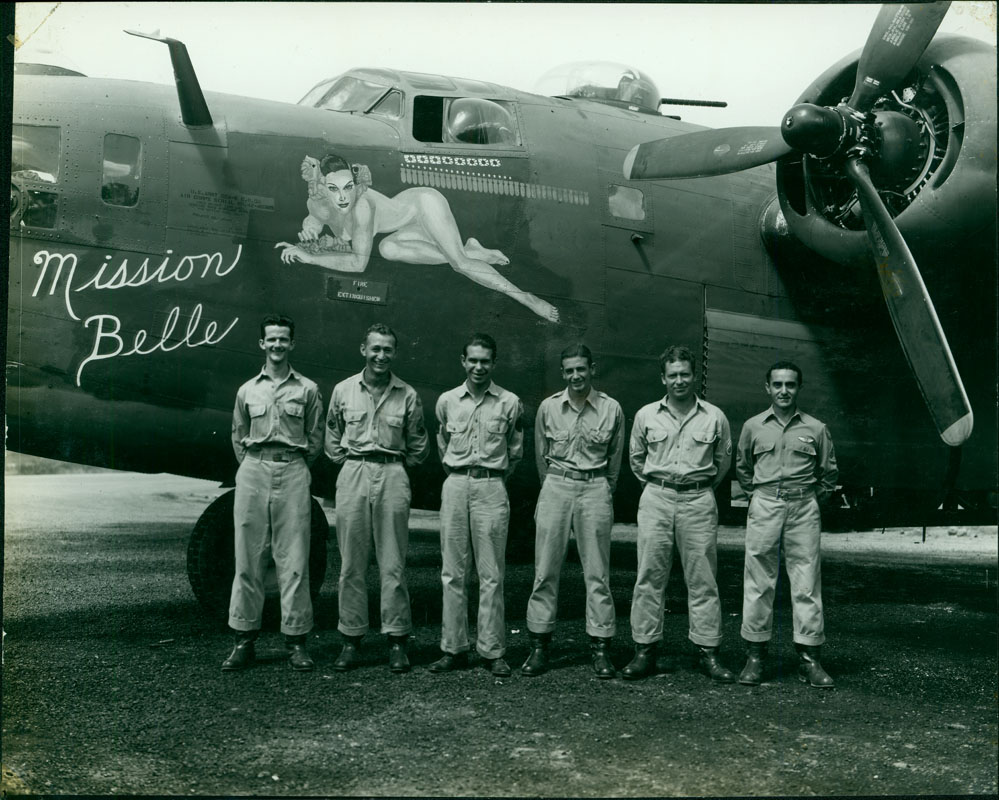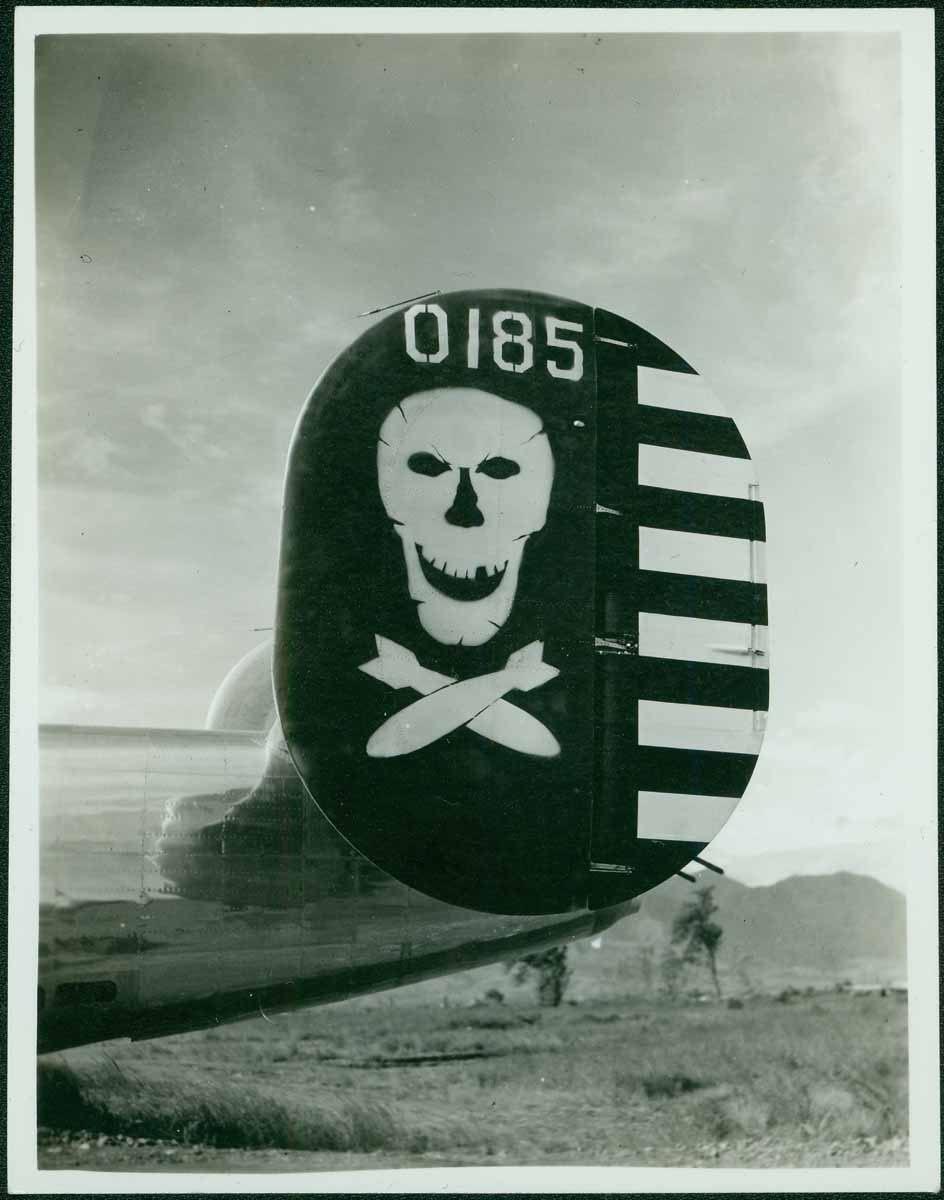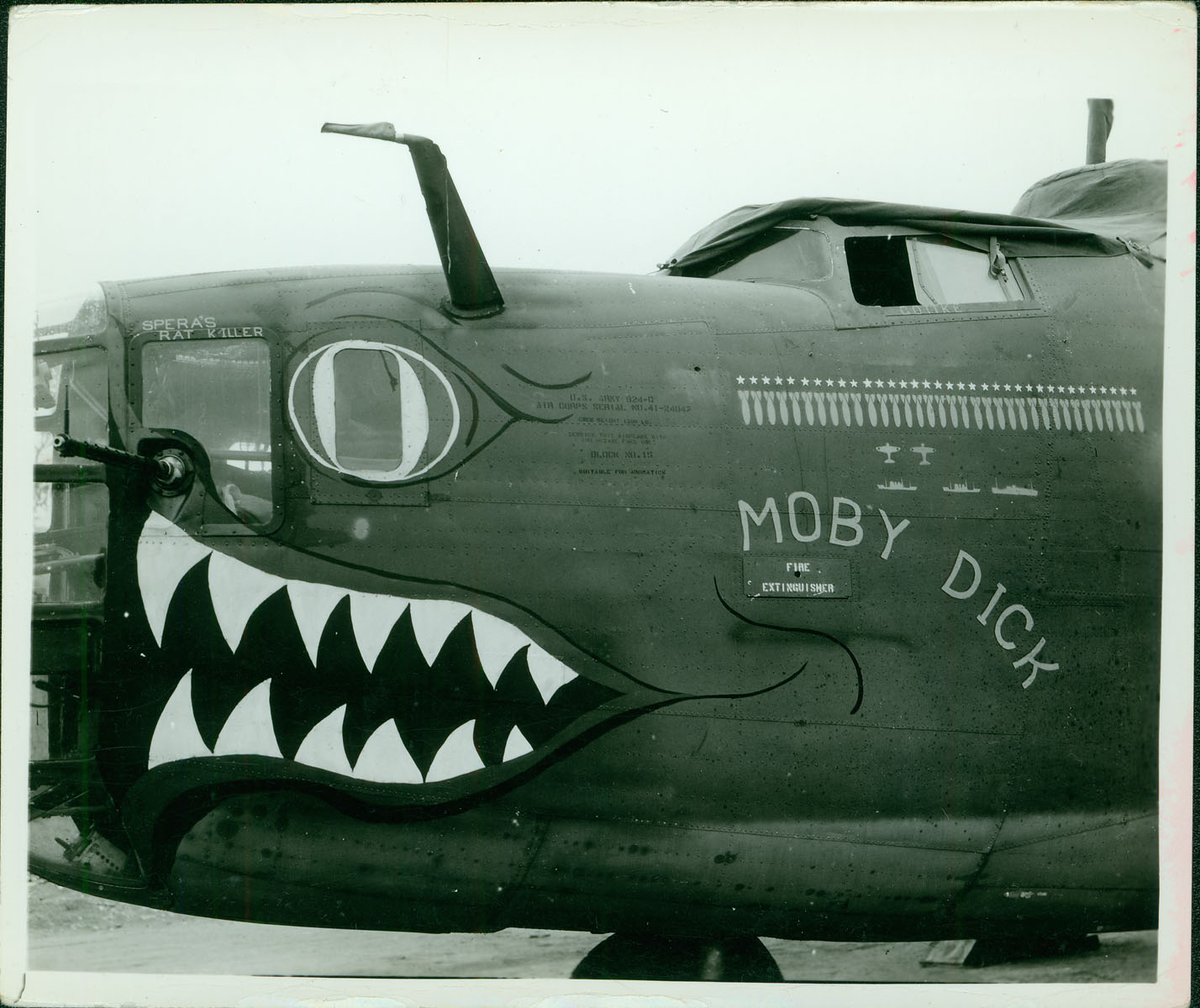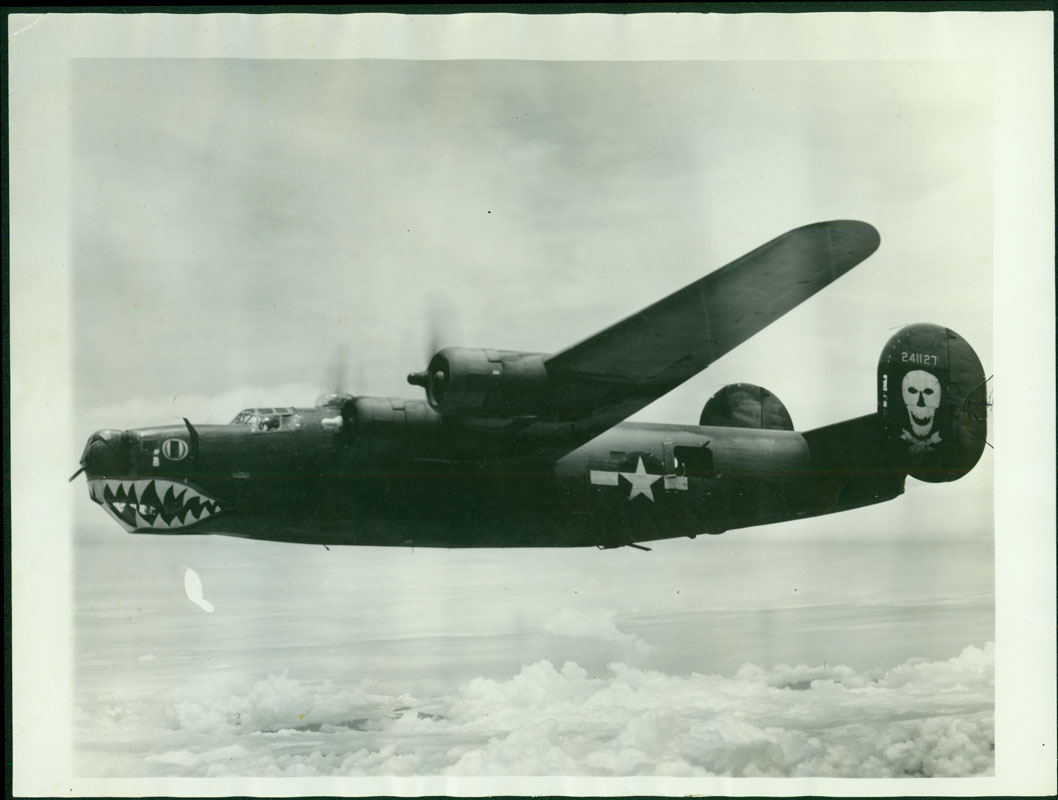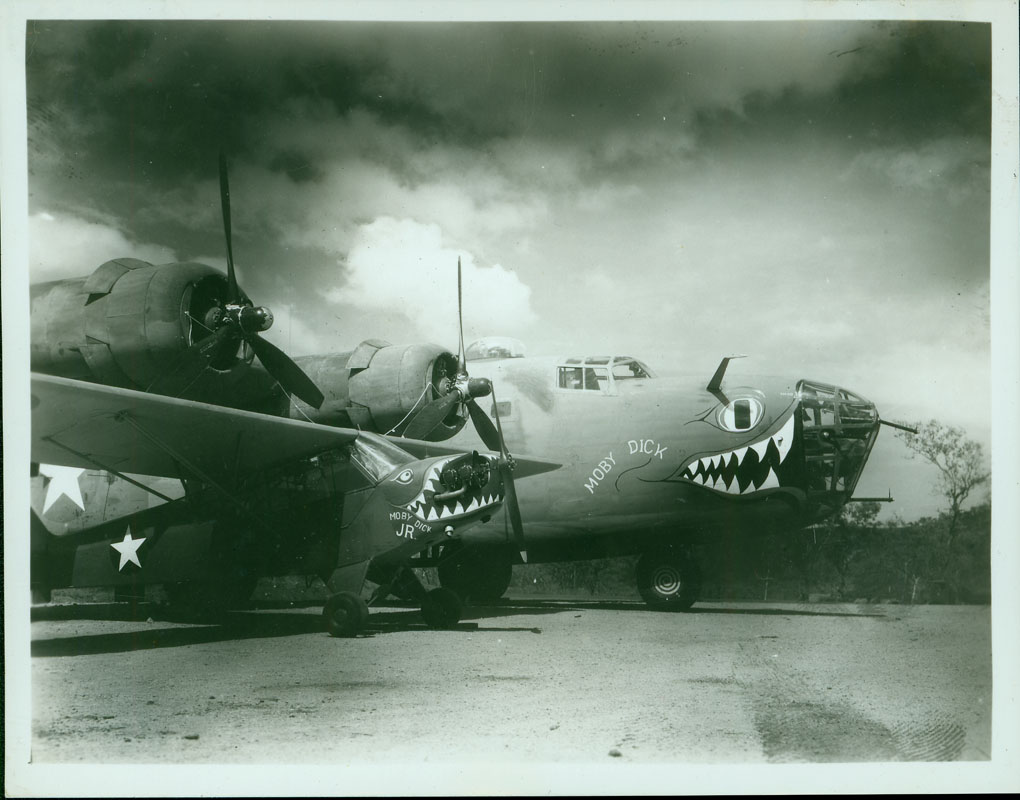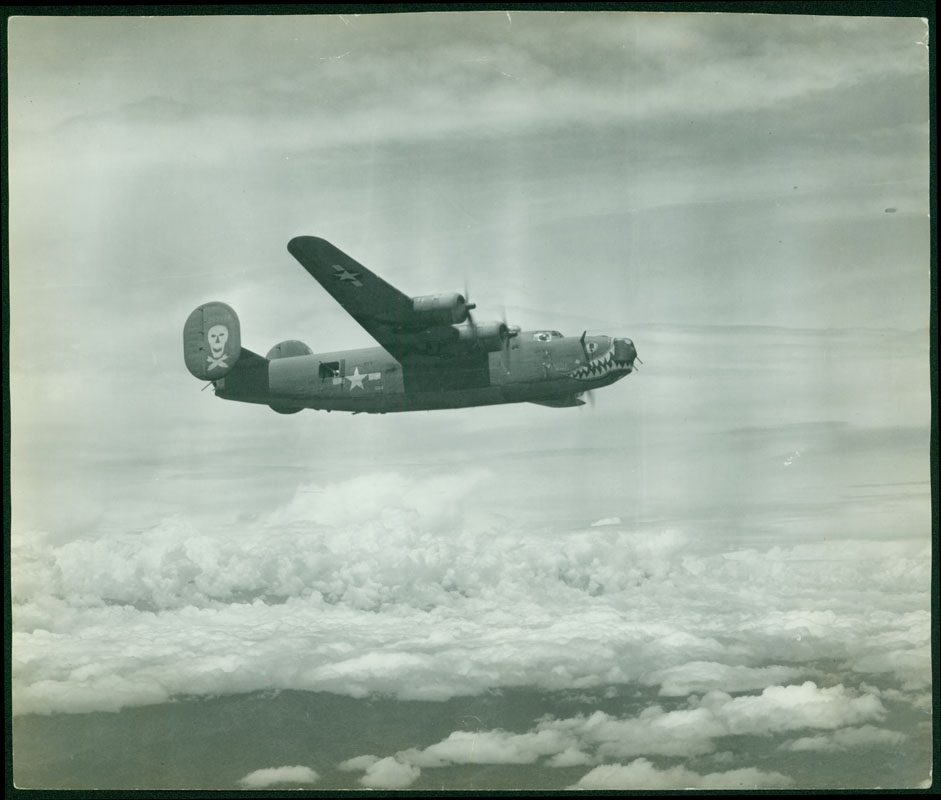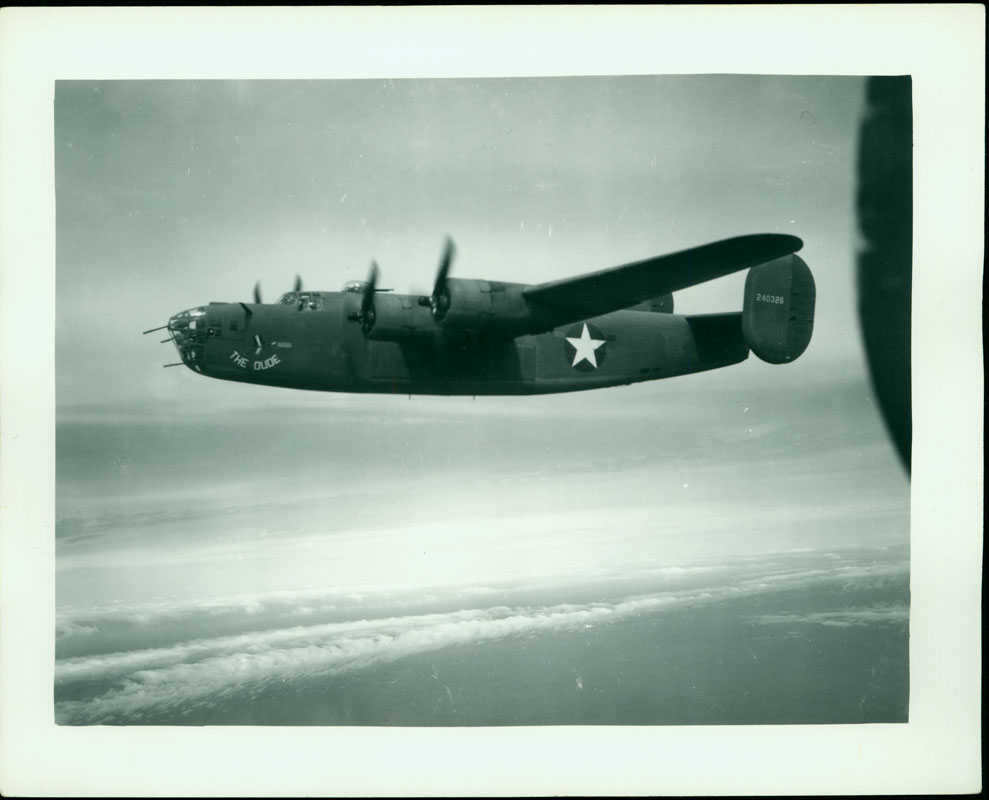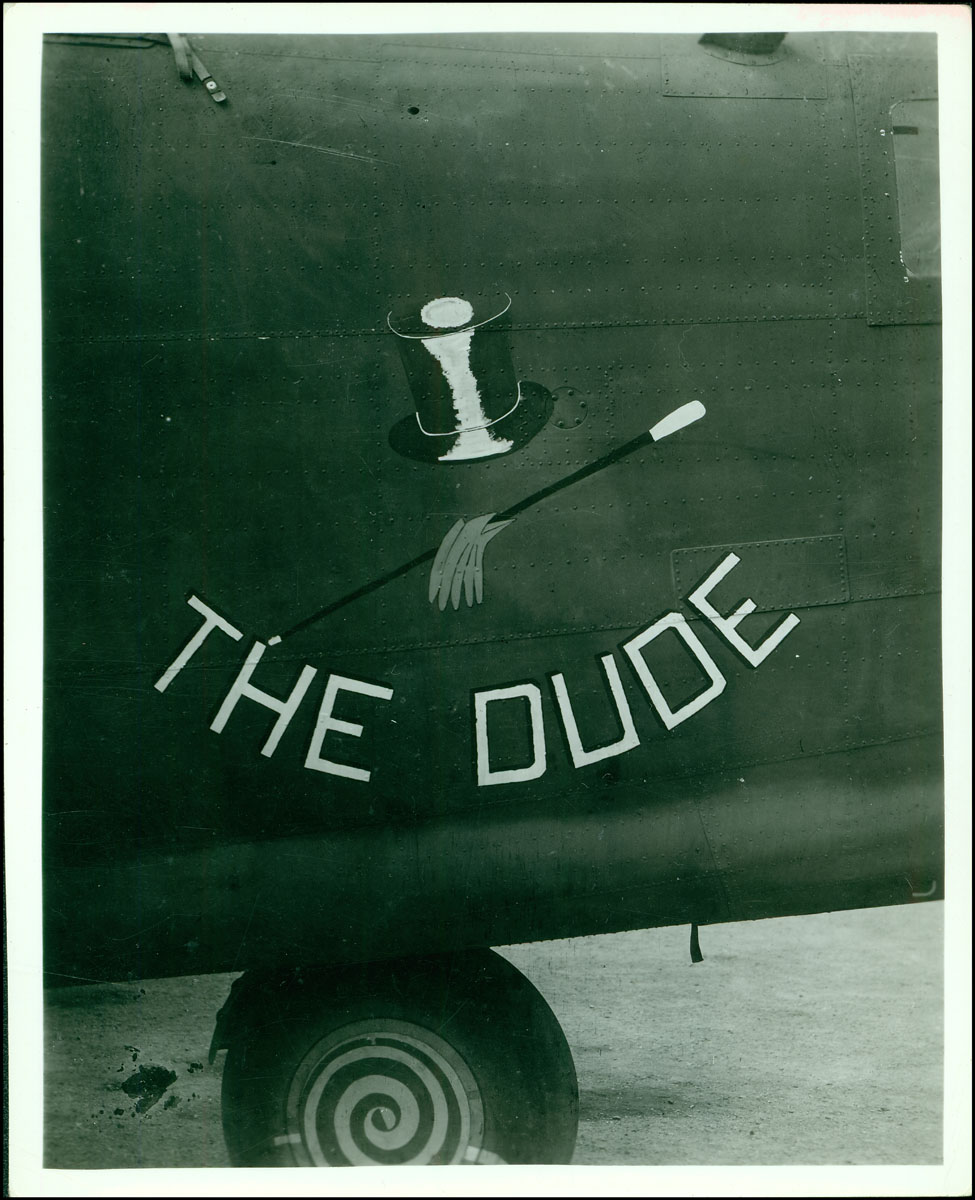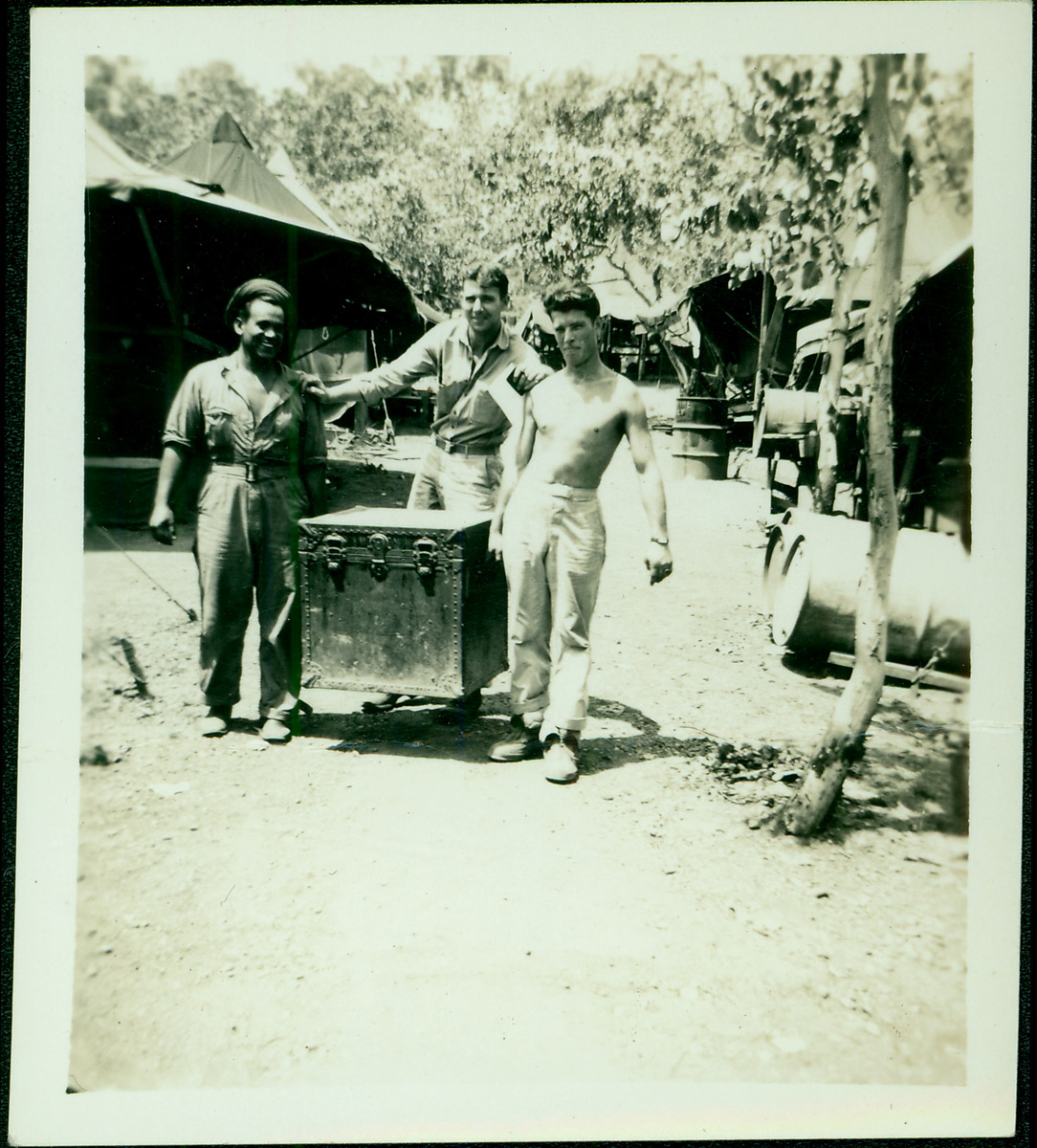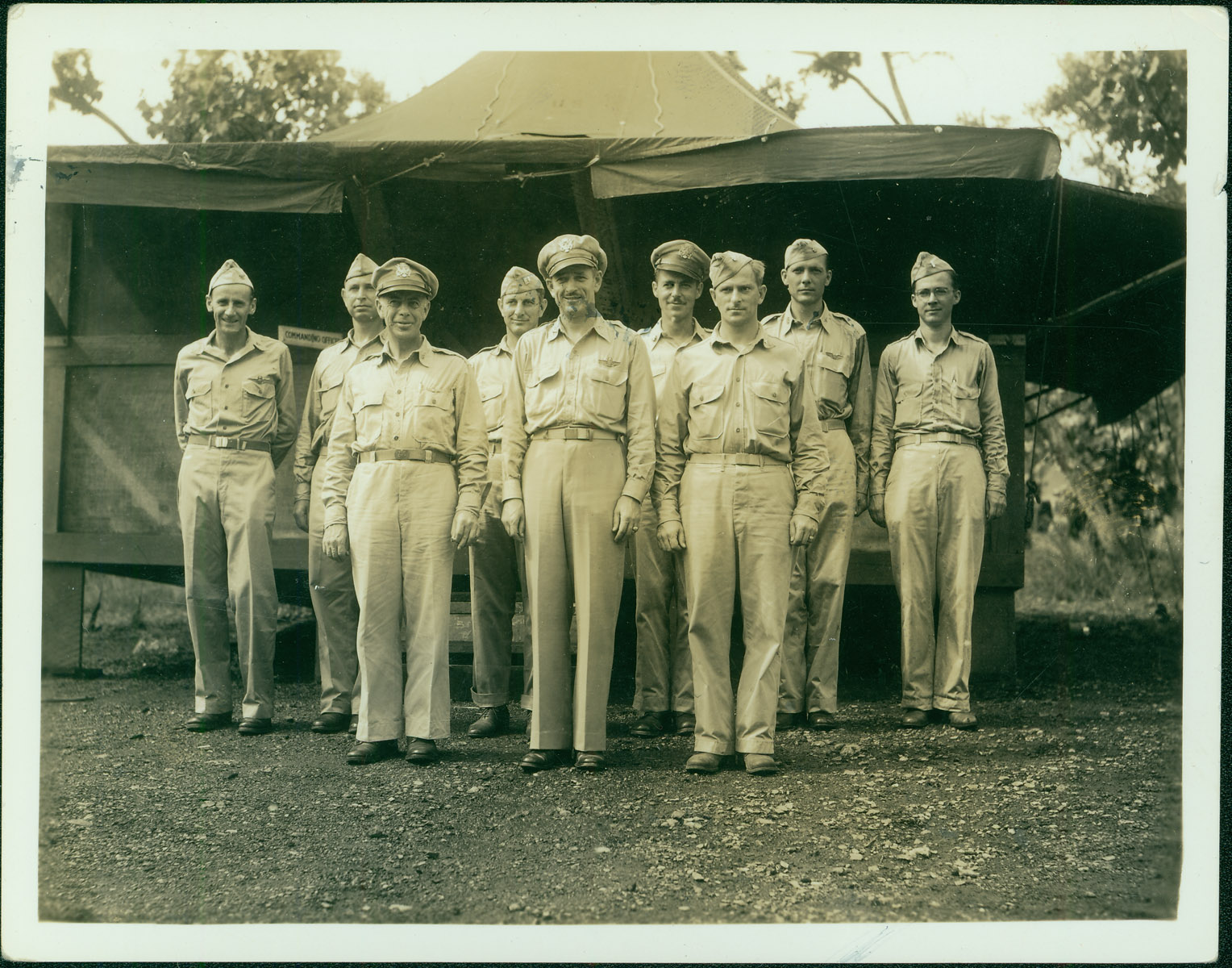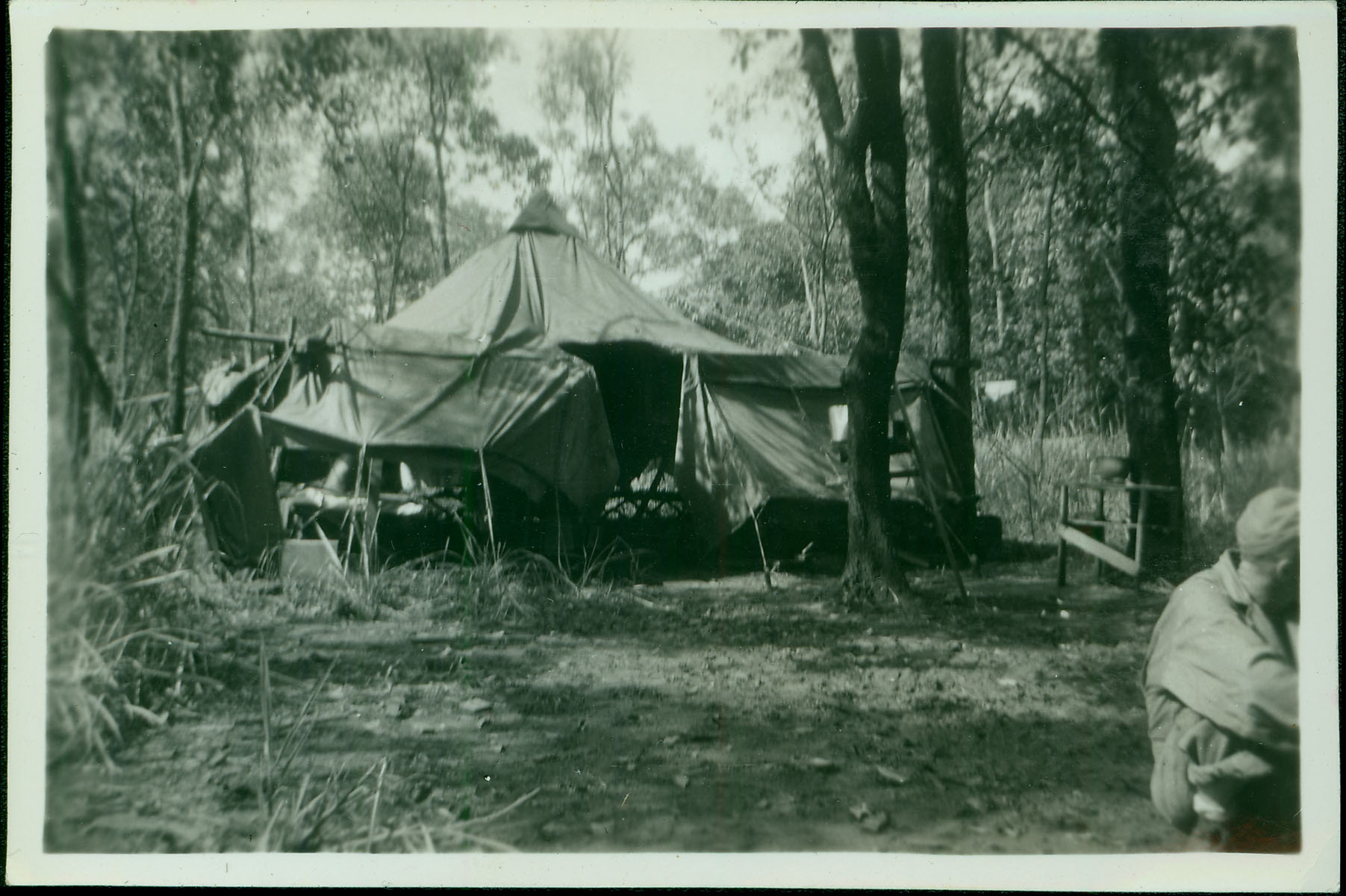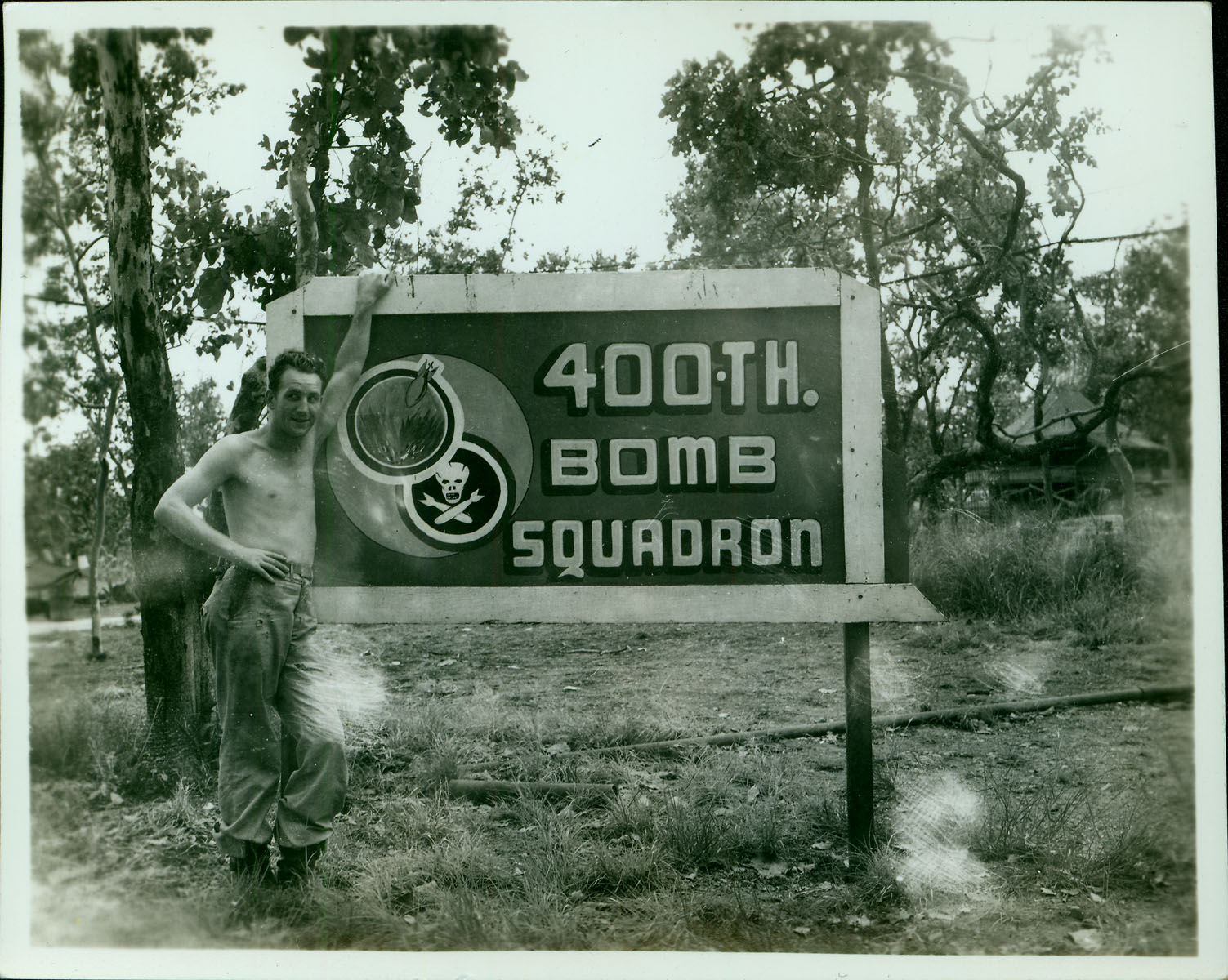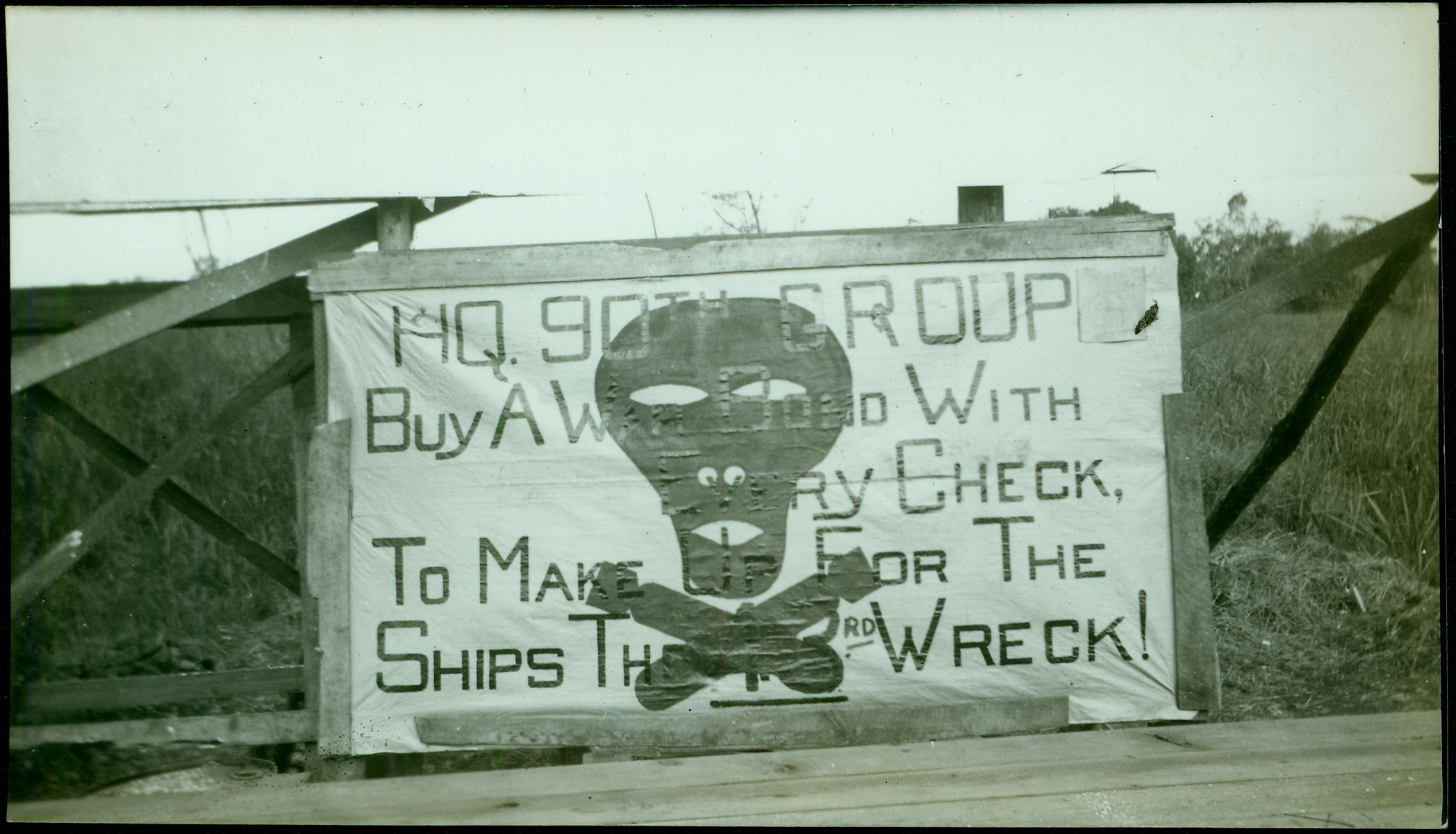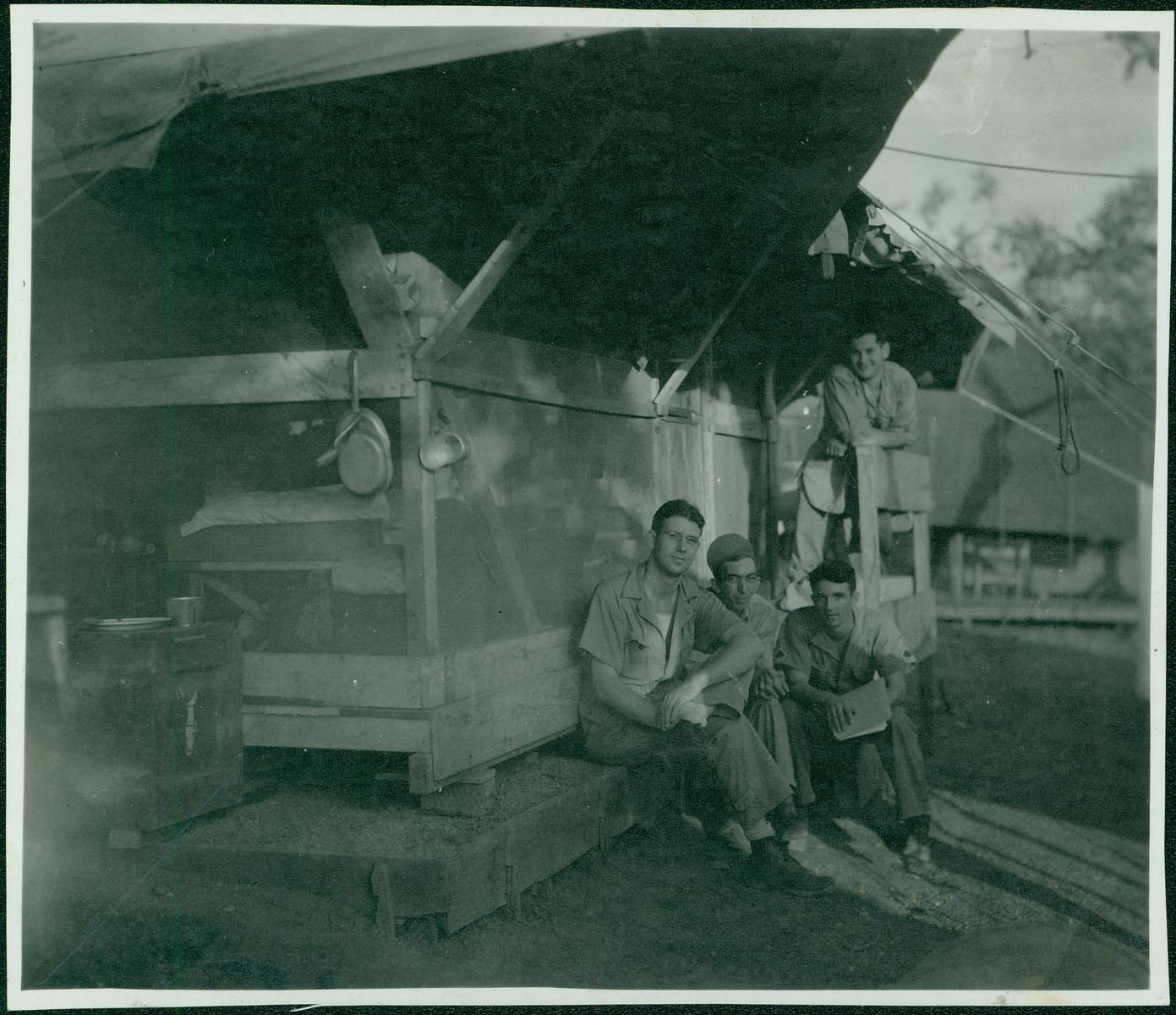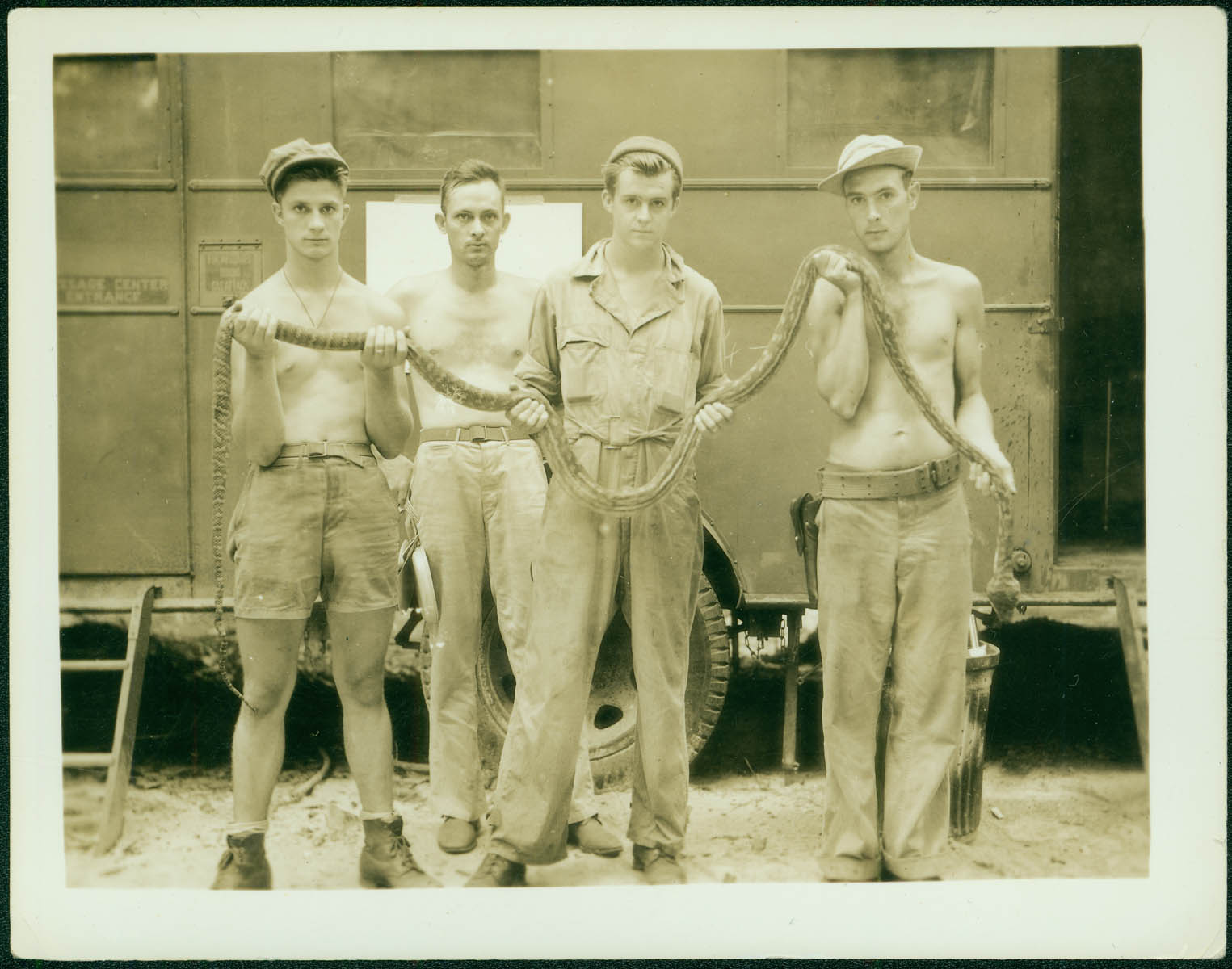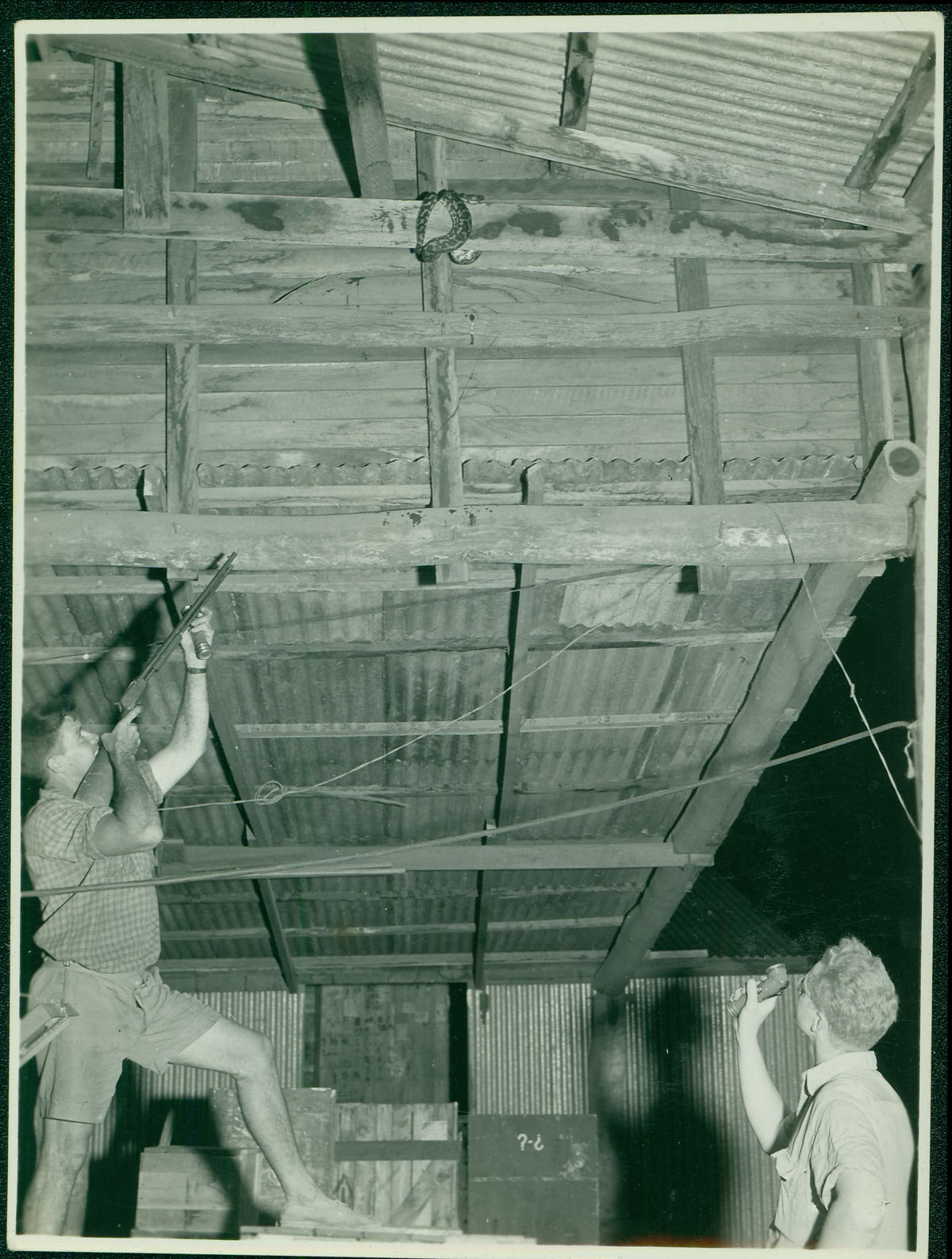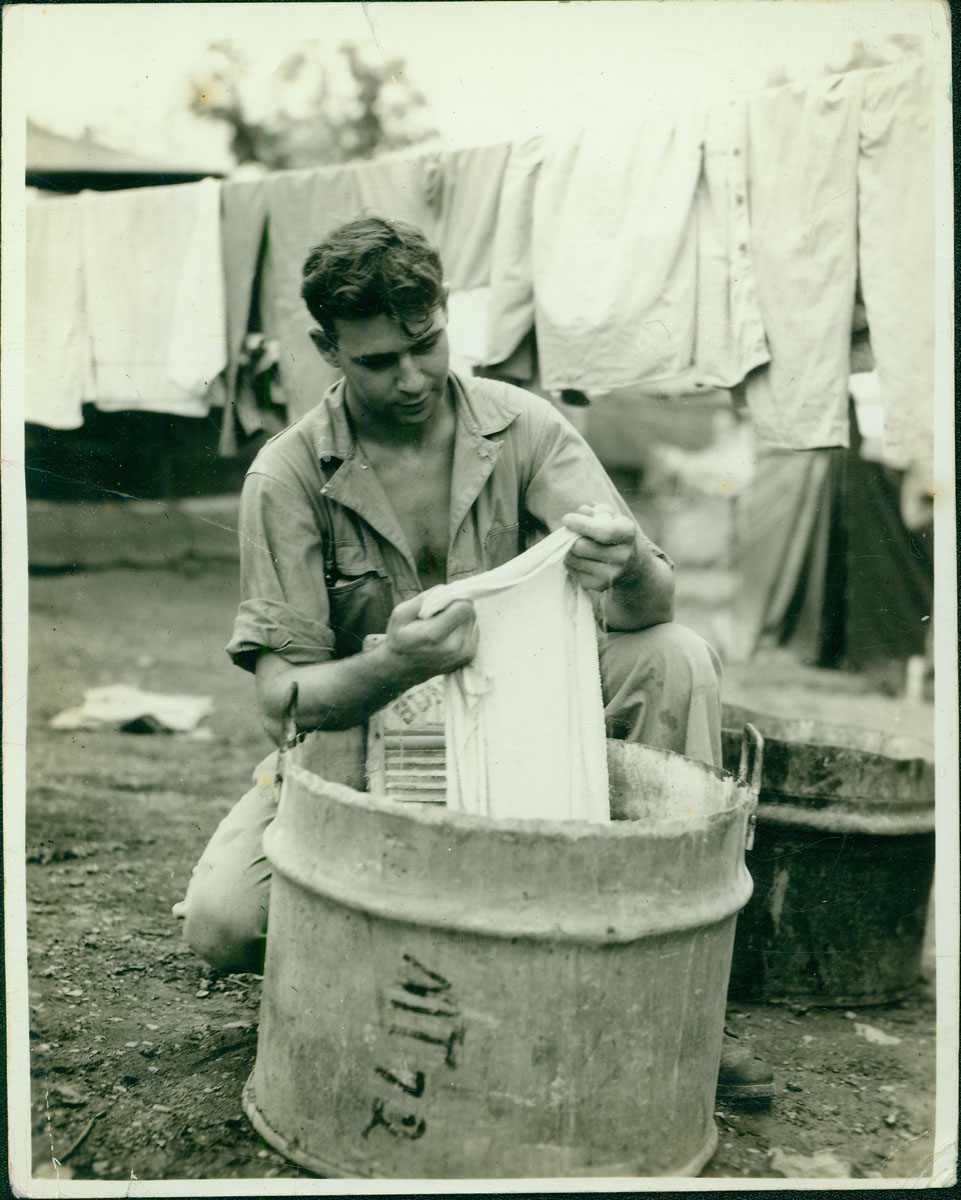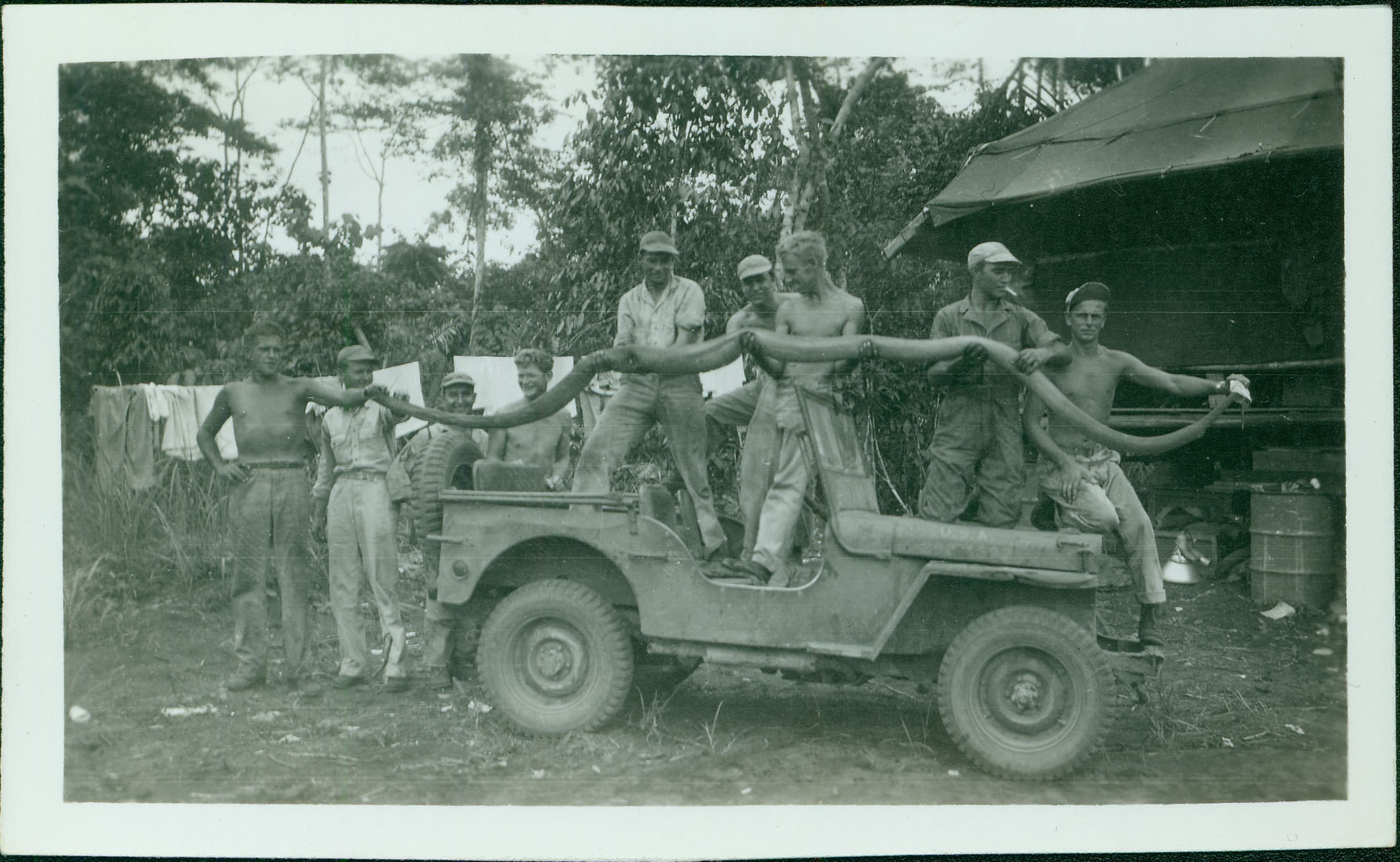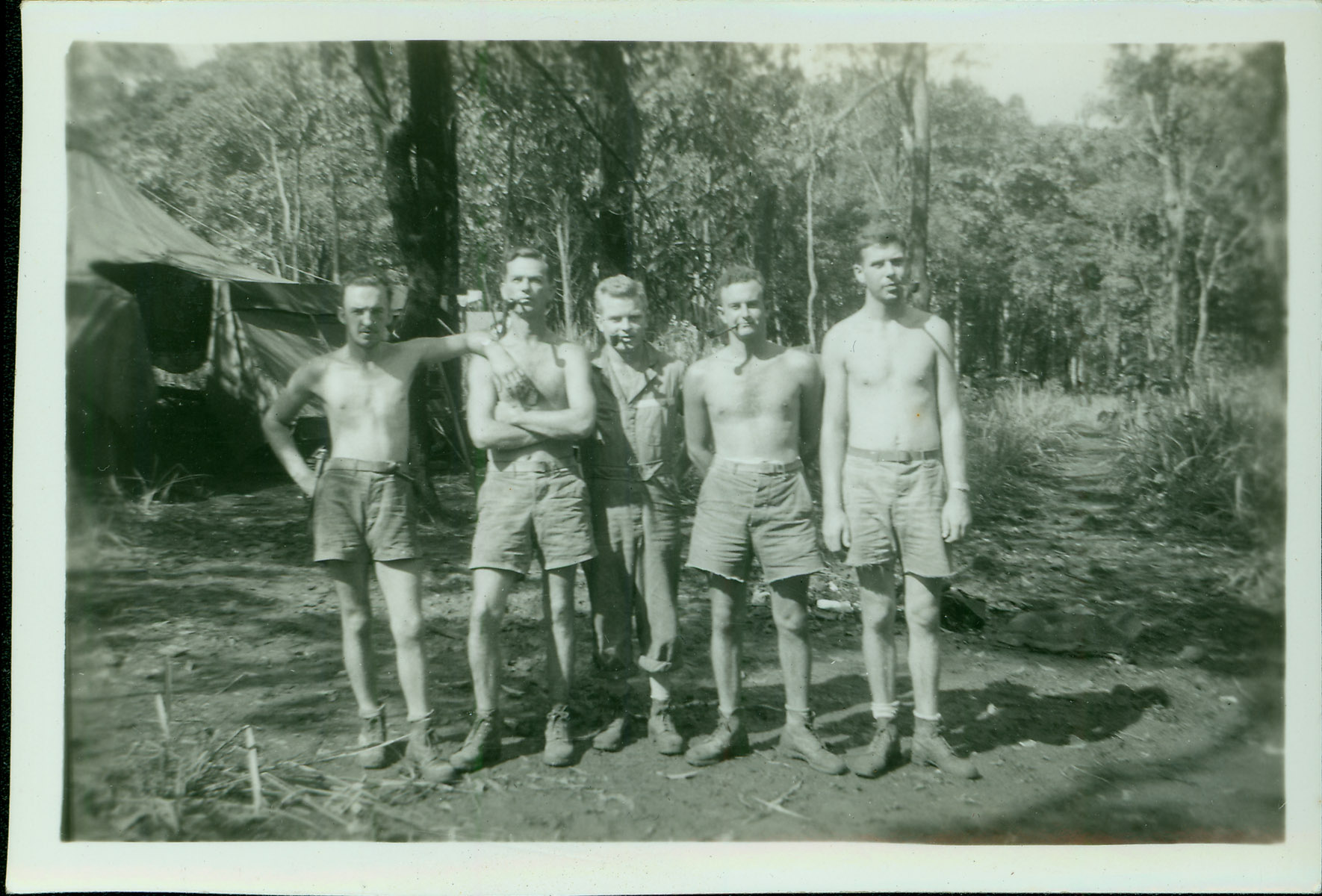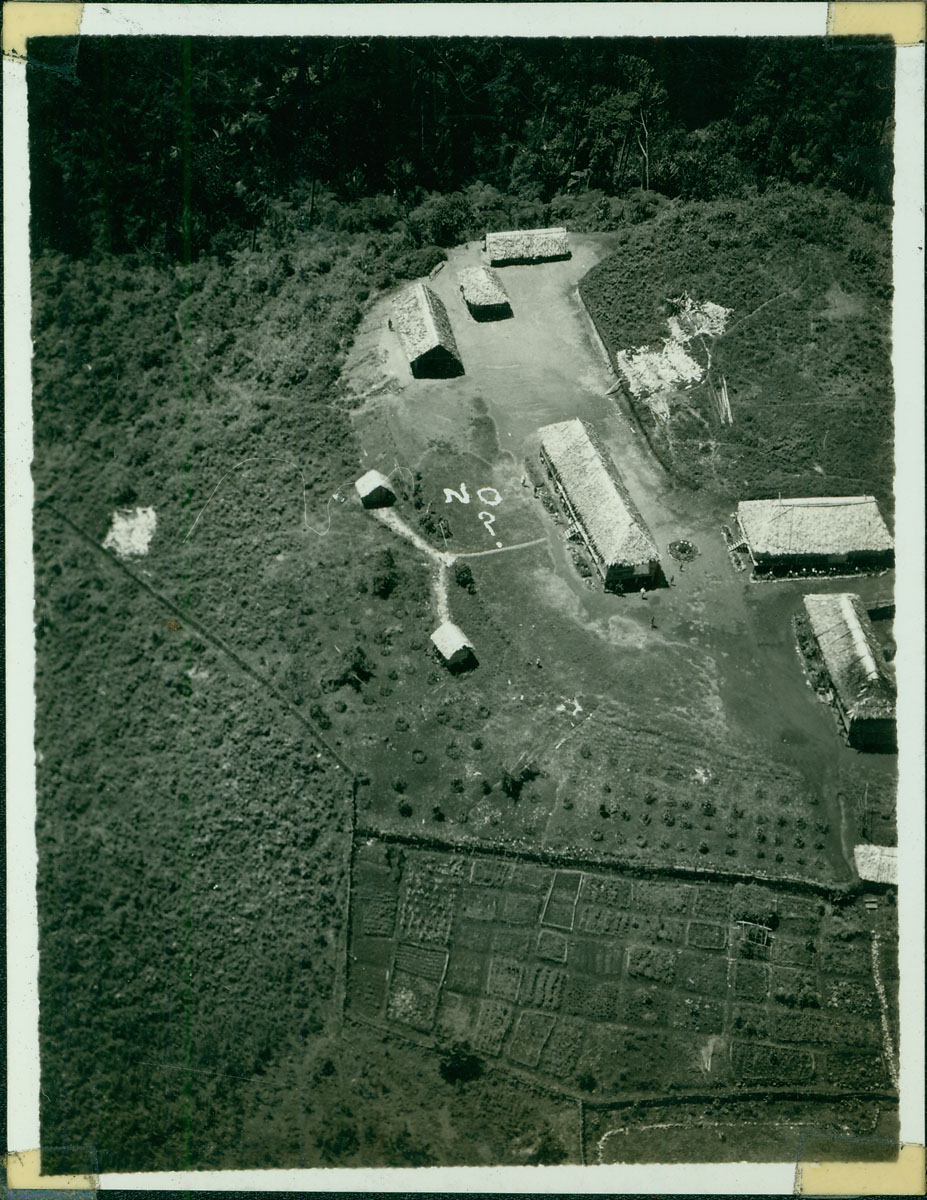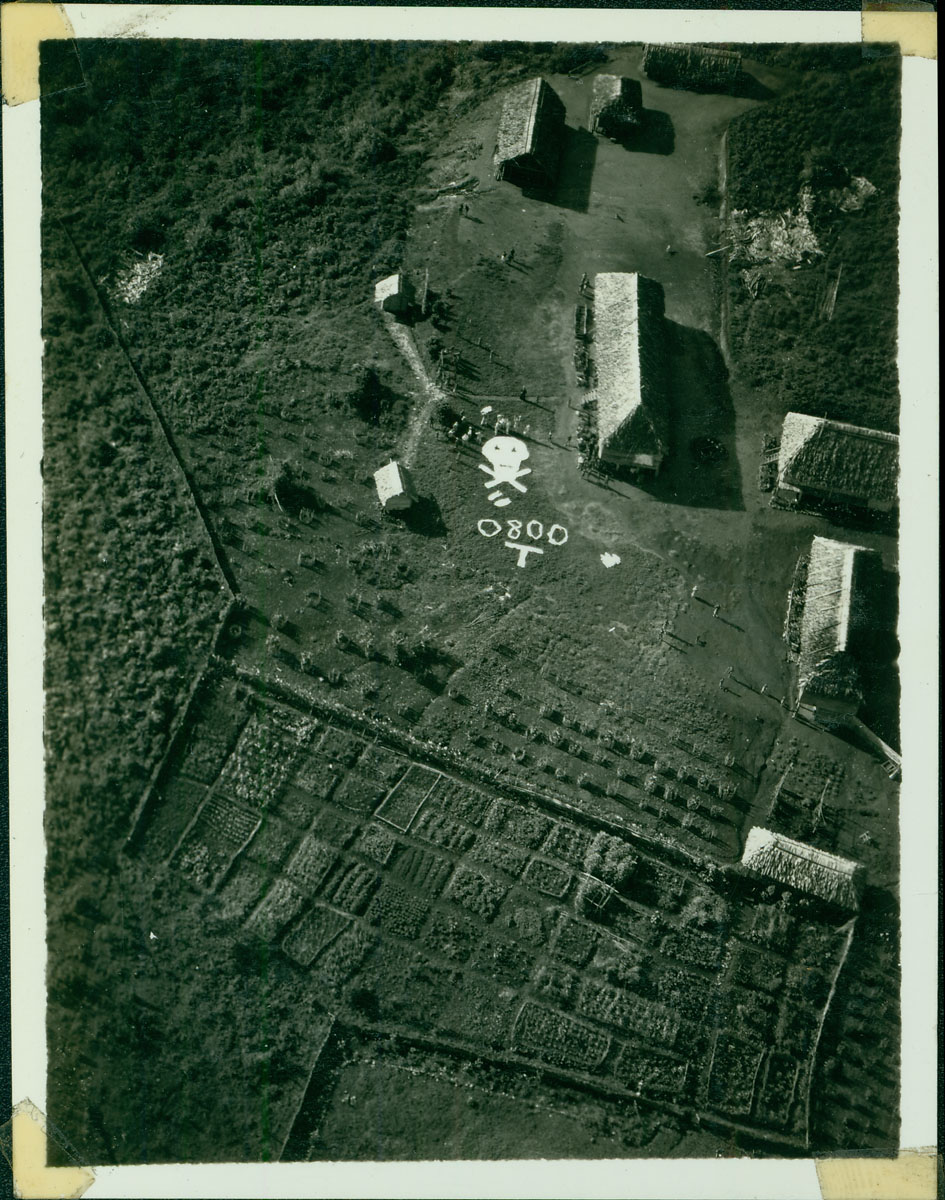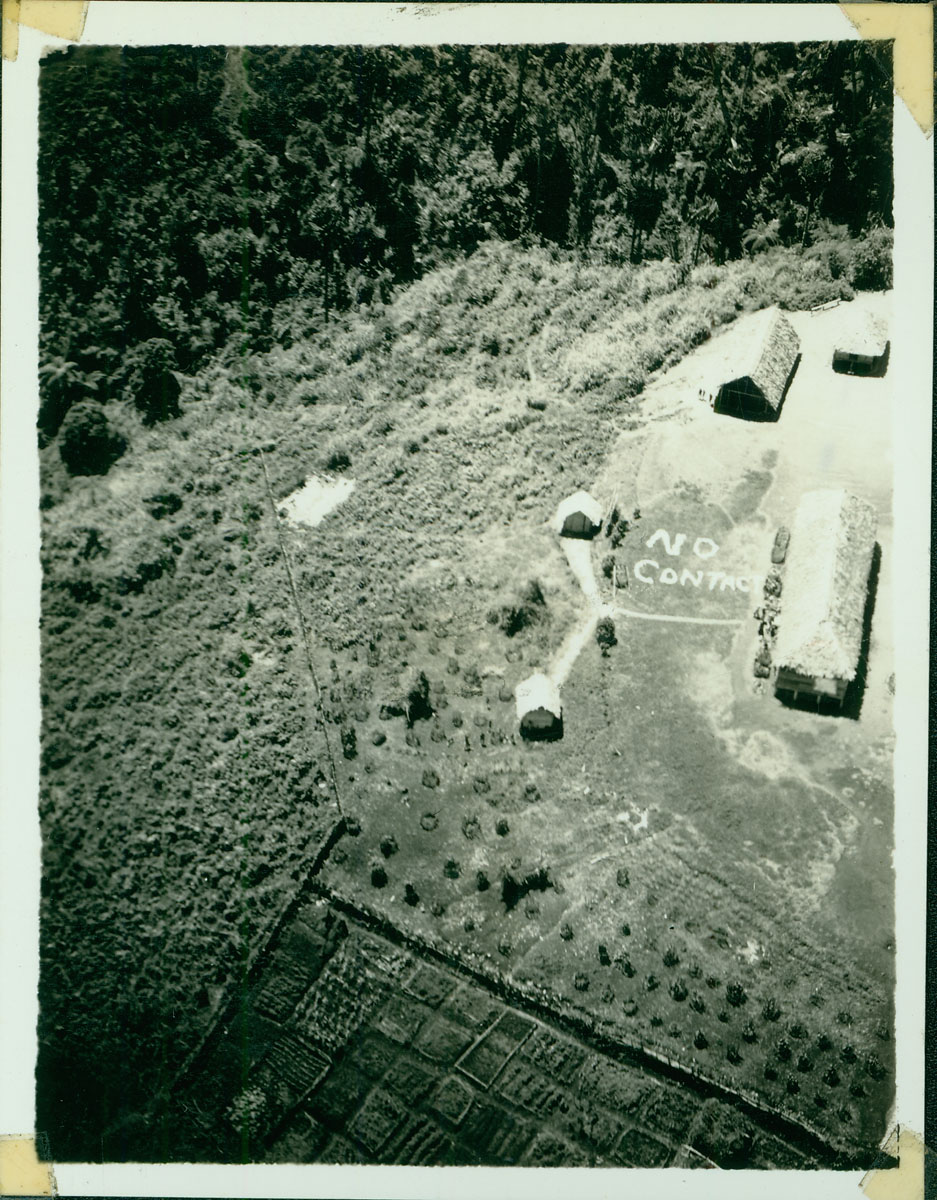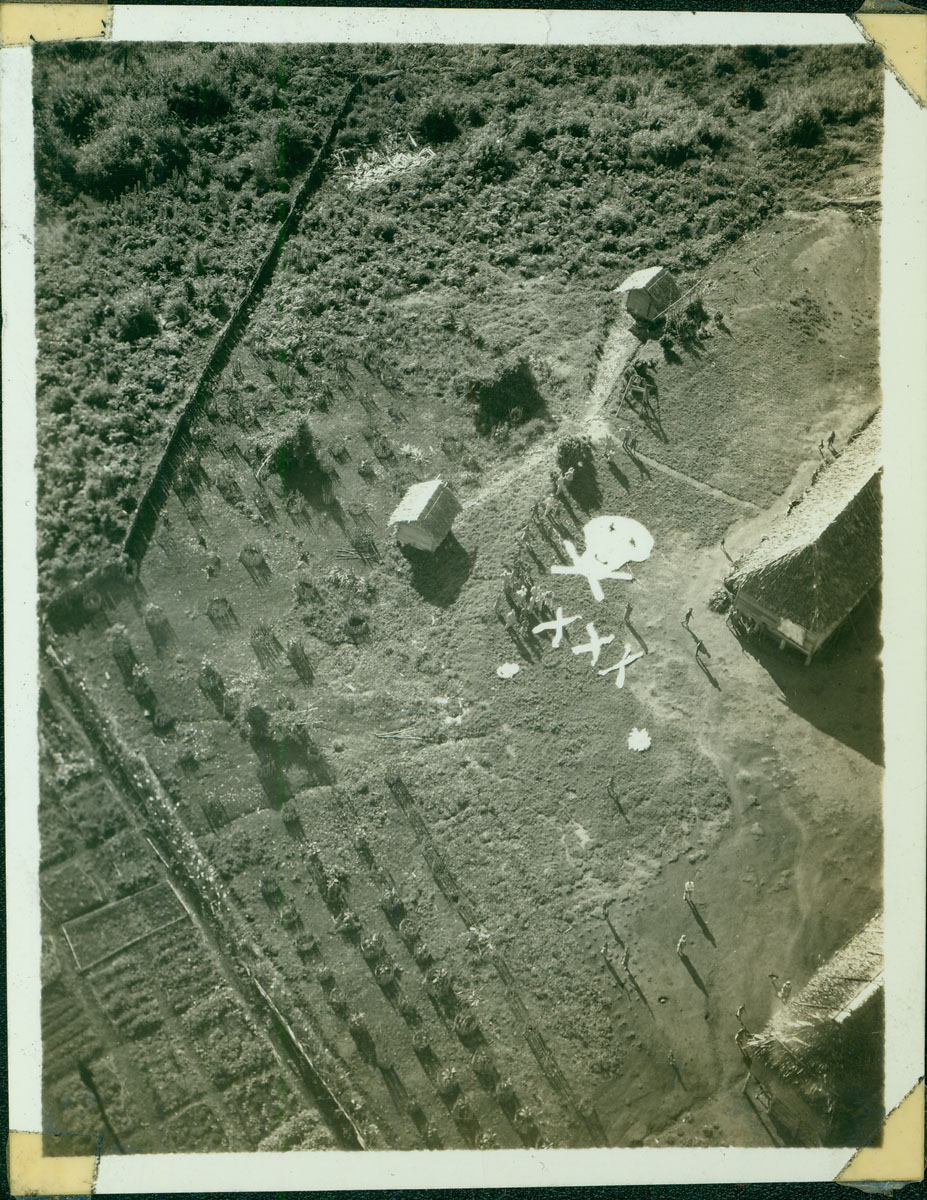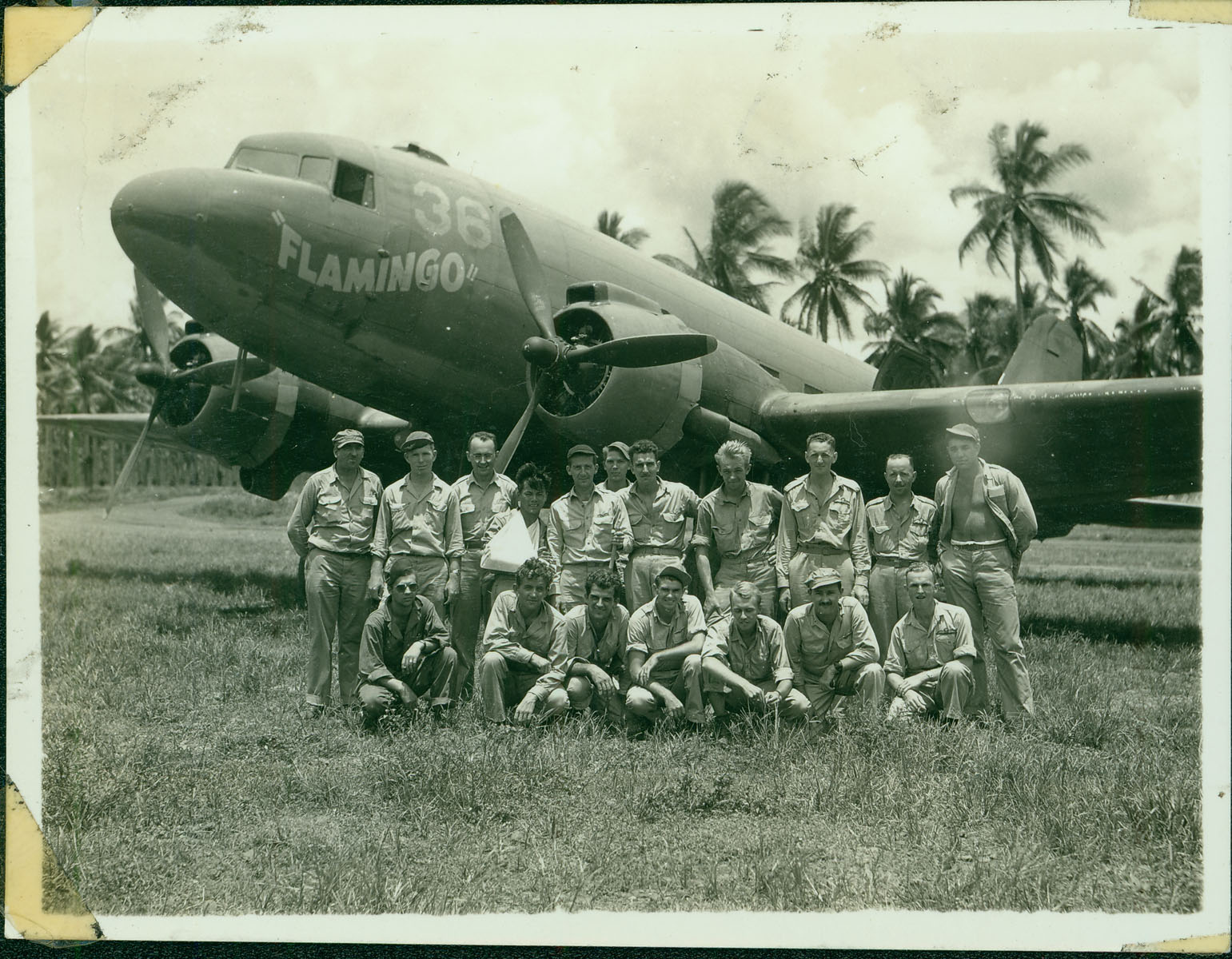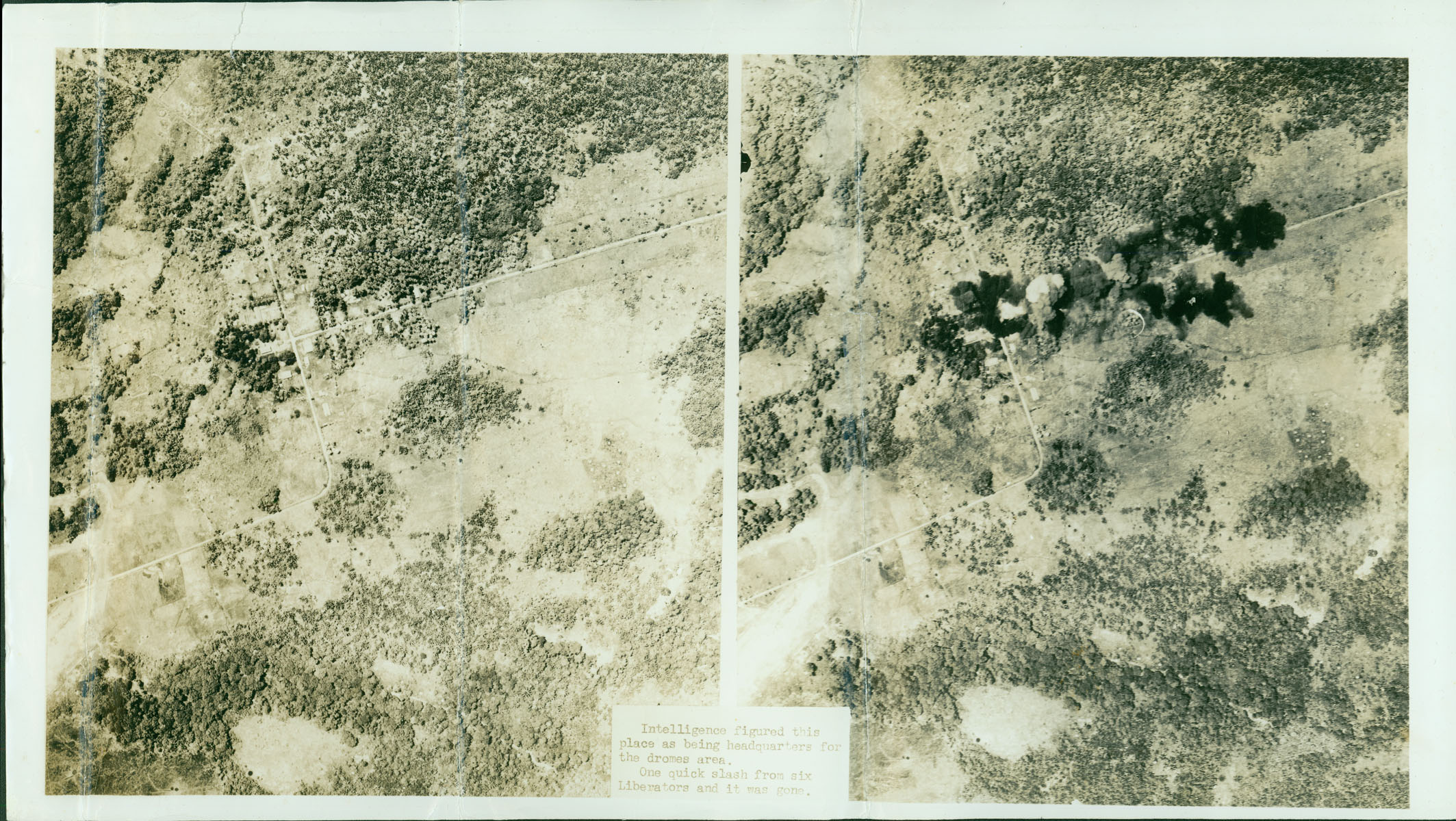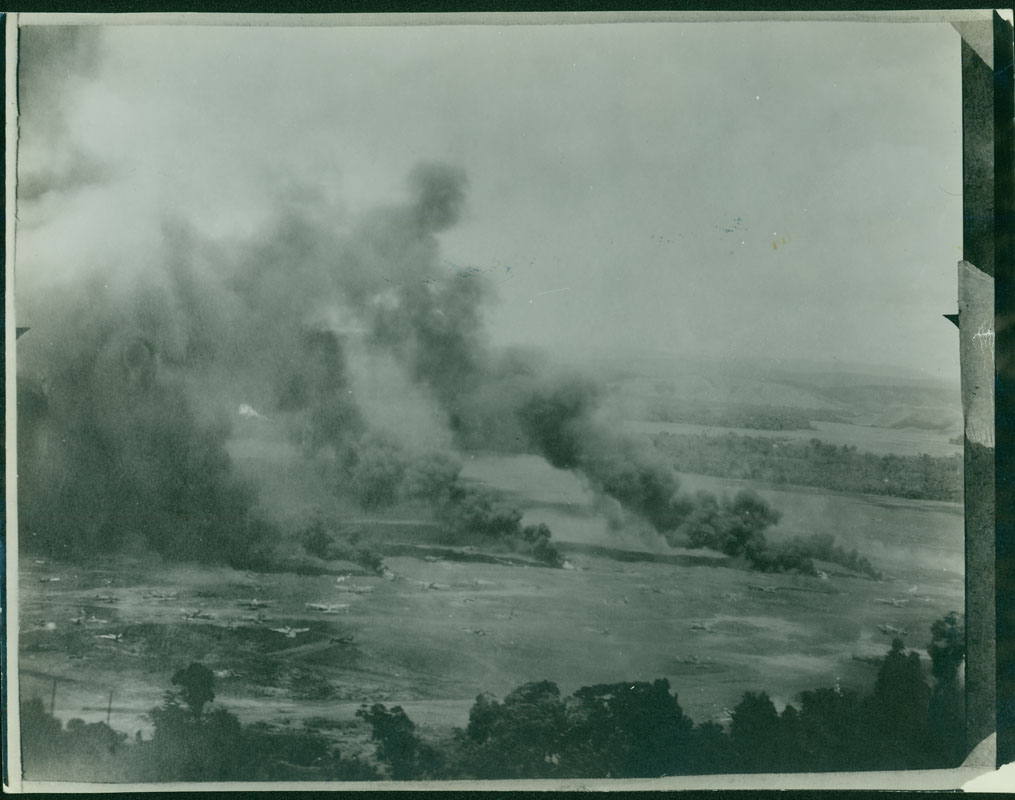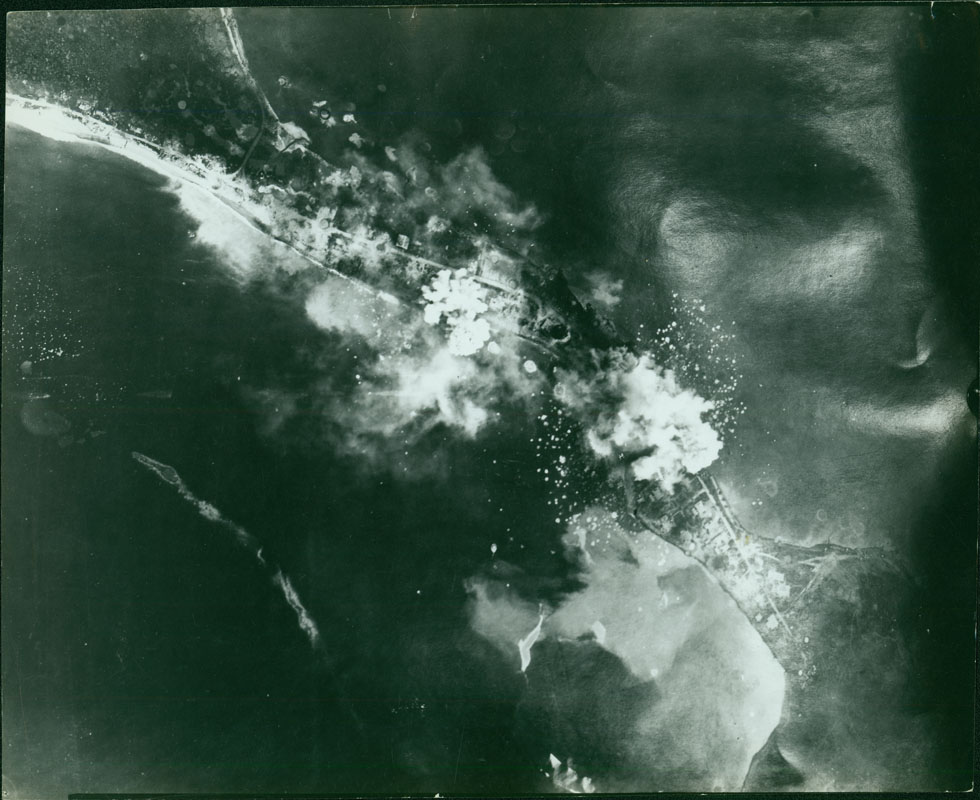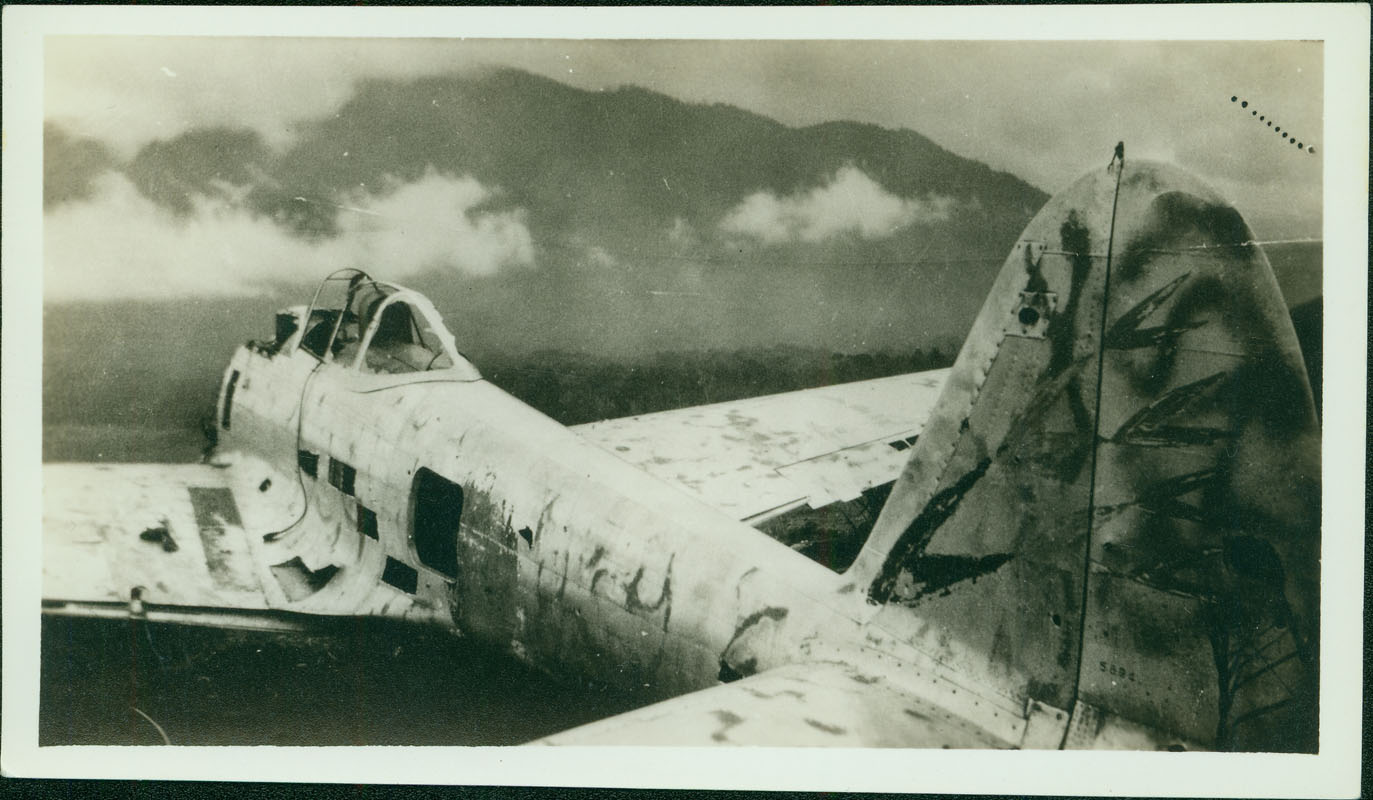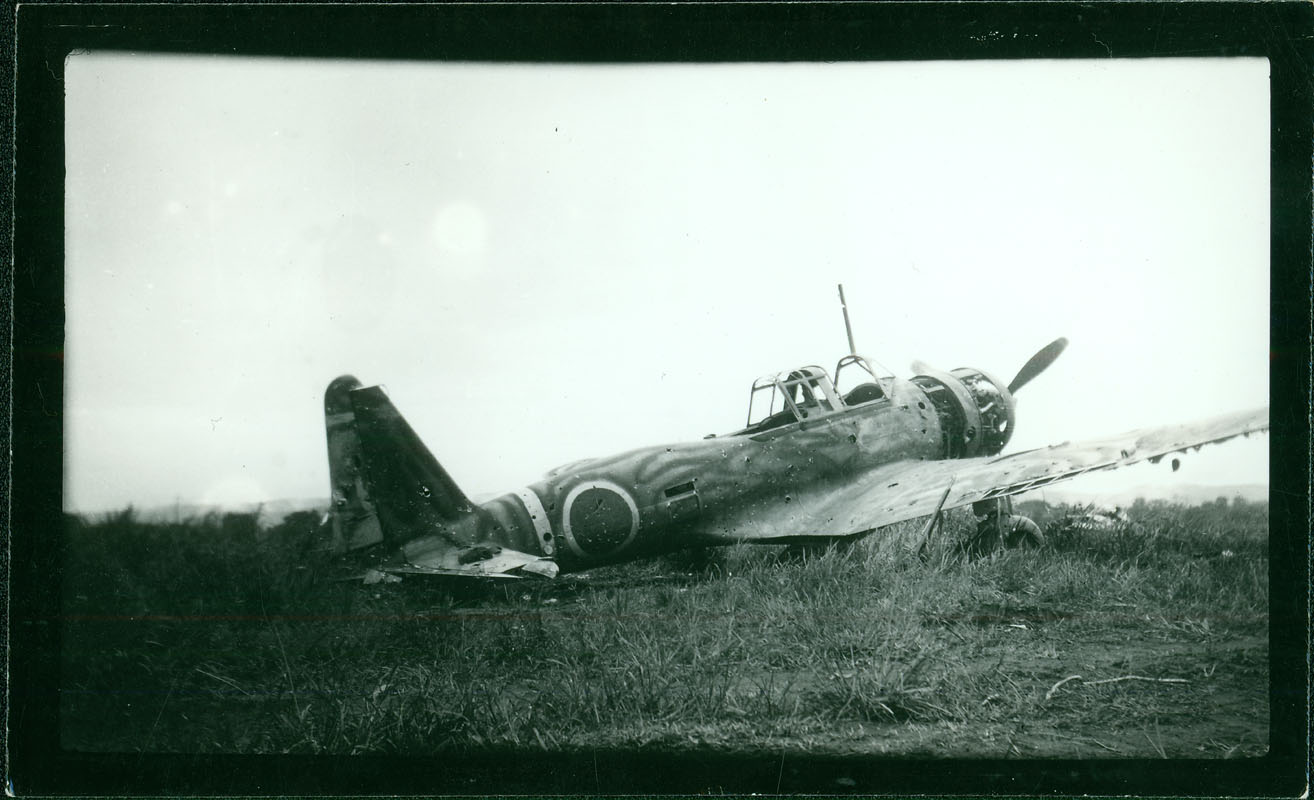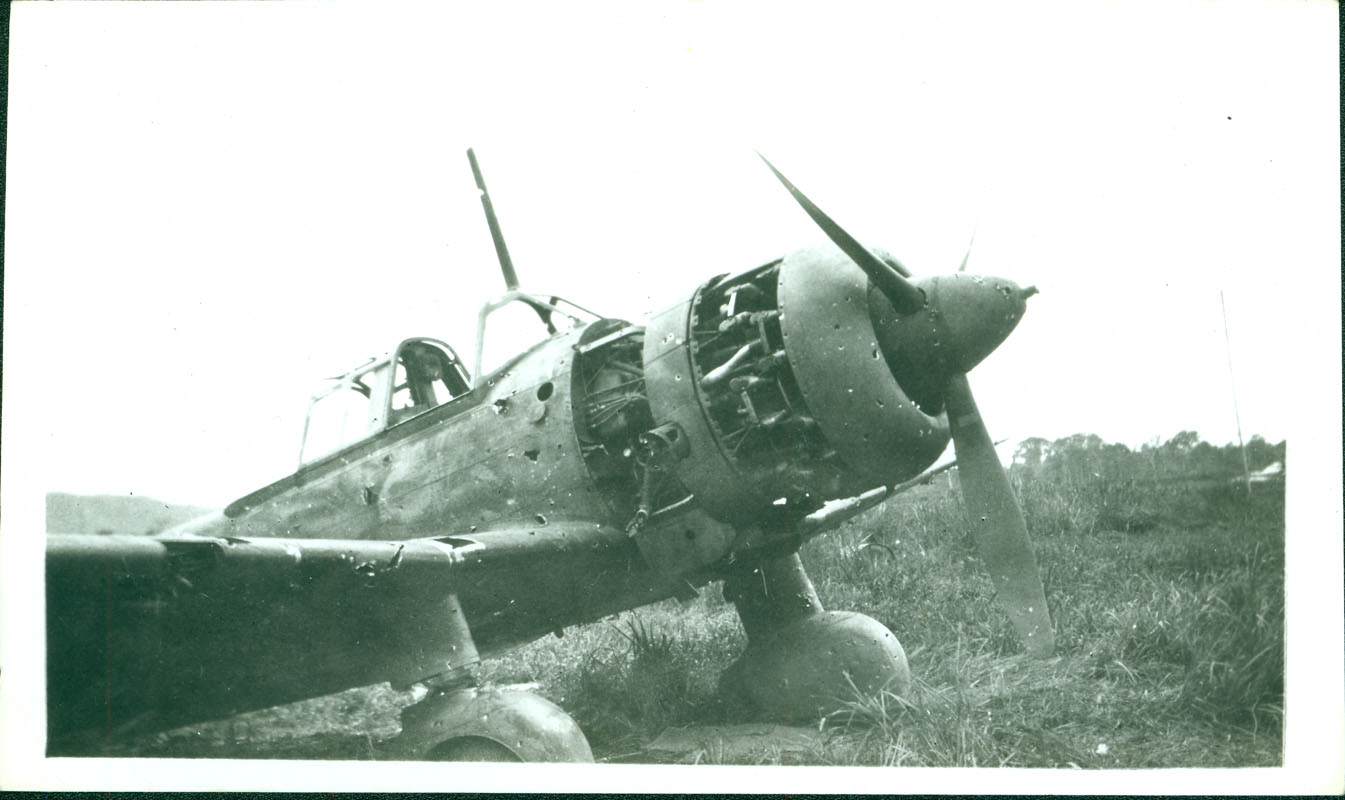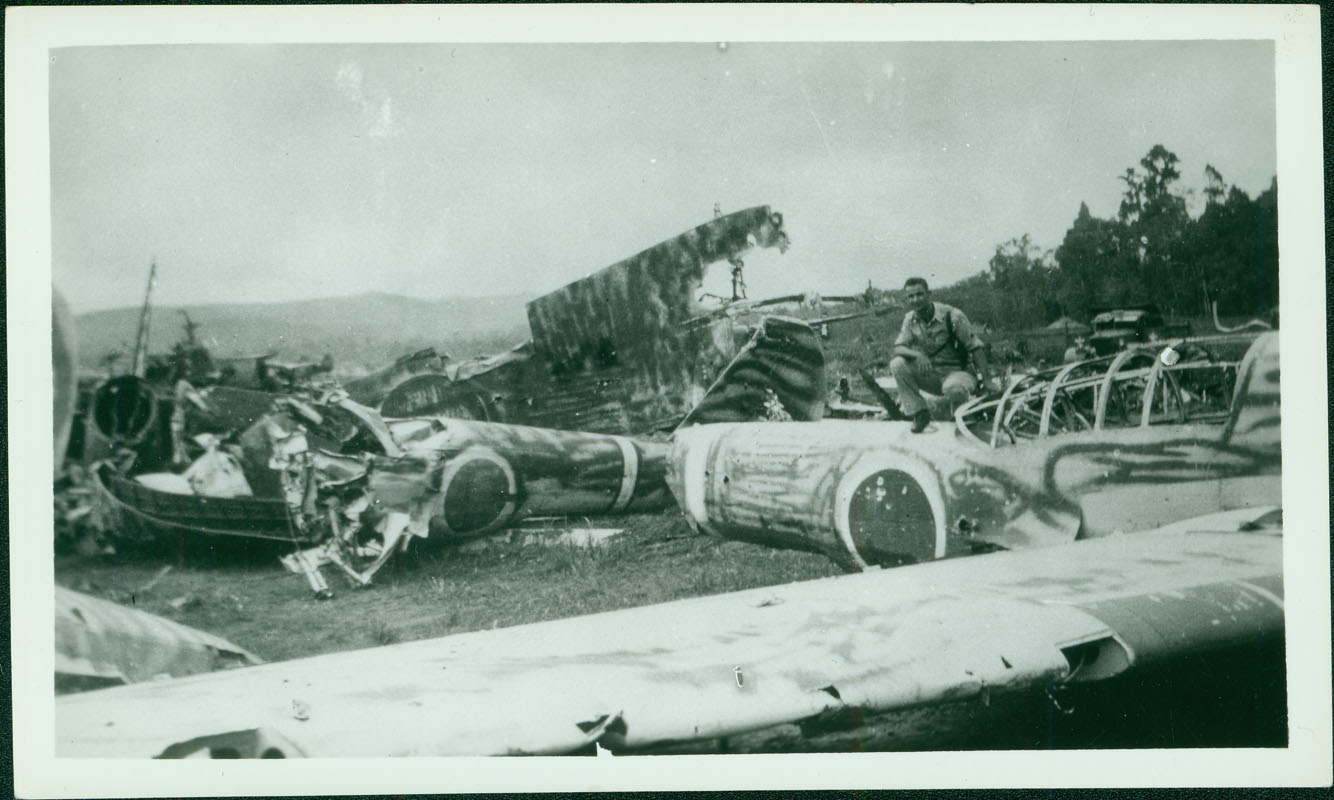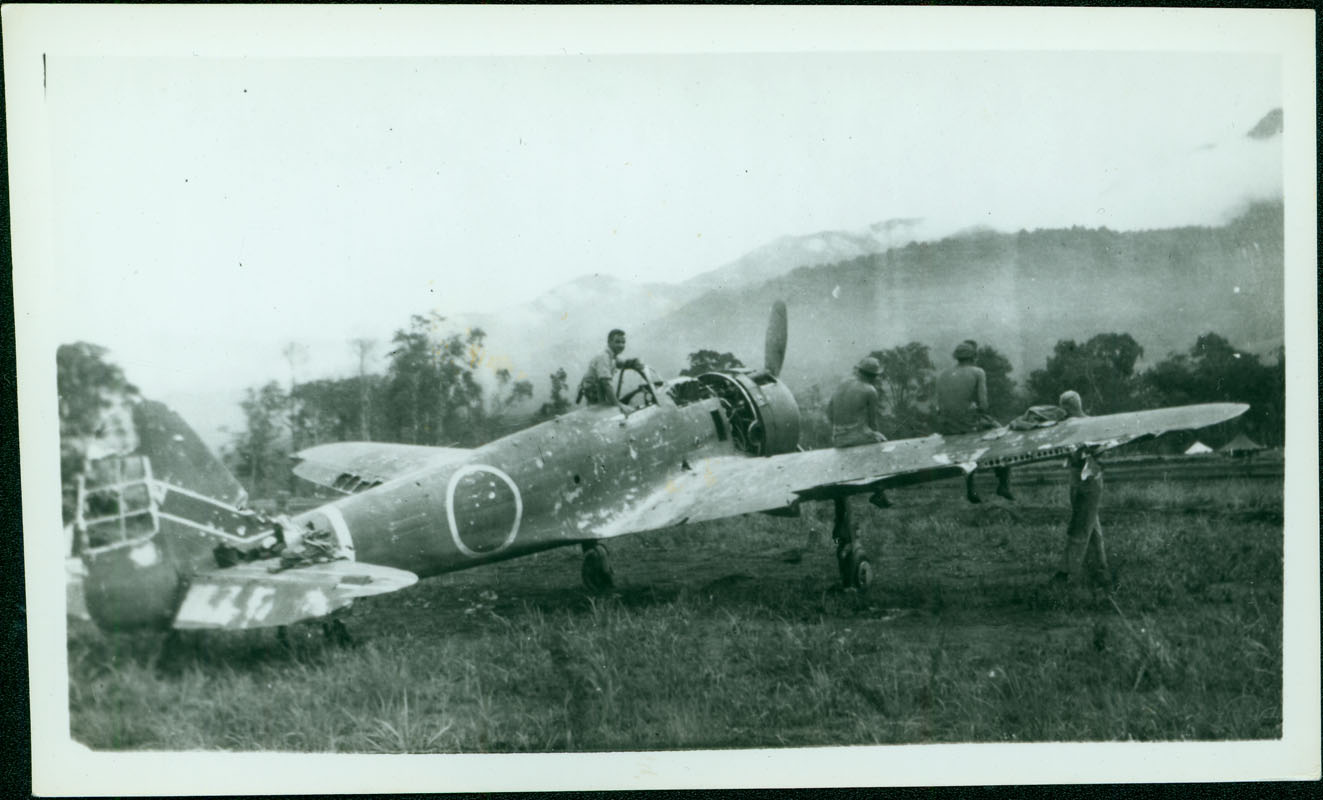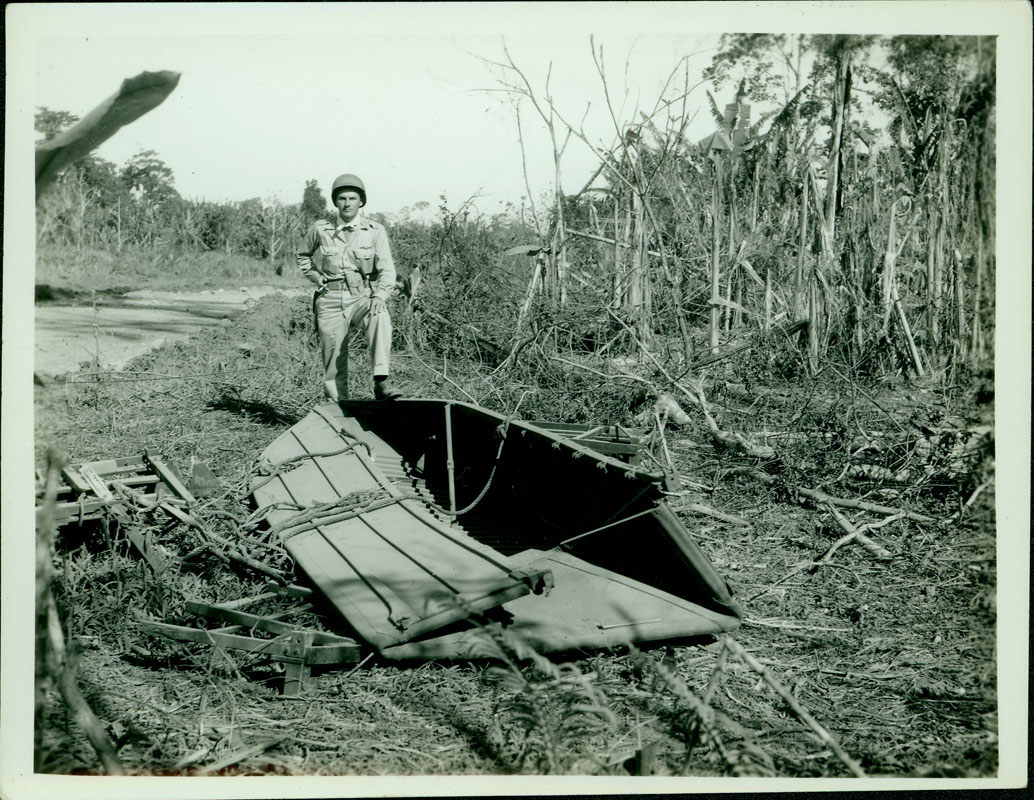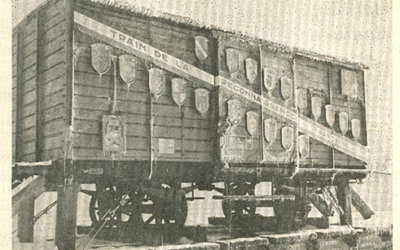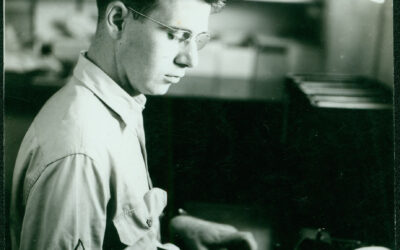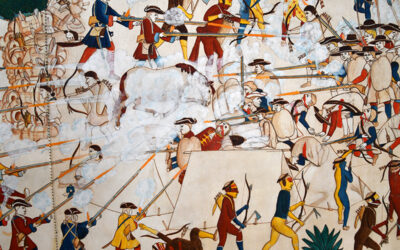Aerial Photographer Experience in the Pacific During WWII
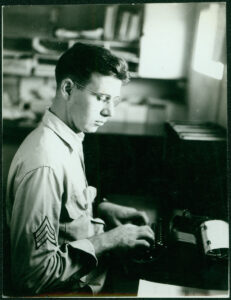
A Nebraskan Aerial Photographer’s Experience in the Pacific During WWII
Robert Auker Merchant (1920-2008) at age 22 became a staff sergeant with the 90th Bomb Group (the “Jolly Rogers”) in the United States Army Air Forces. He served from 1942-1945. The 90th Bomb Group operated predominately in the Southwest Pacific (Australia and New Guinea) as a B-24 Liberator heavy bomber unit assigned to the Fifth Air Force. Merchant worked as an aerial photographer, documenting several attacks, battles, and rescue missions while in air and while on the ground. He also captured B-24 nose art and wrecked Japanese warplanes.
Photos taken by aerial photographers were not always simply for historical purposes, as one of Merchant’s pictures in the Pacific region illustrates. Their skills were often used for reconnaissance, mapping the location of enemy troop formations and target areas. Merchant served with several other photographers in his unit. While it is presumed that all the photos in the collection were taken by Merchant himself, some trading of photographs did go on between photography units.
After WWII ended Merchant returned home to Wayne, Nebraska, and took over management of his father’s business, Merchant Oil Company. Merchant married Pauline K. Kunde in 1946; they had two daughters, Paulette and Joanie. Merchant was an active member of the Wayne community. He served as president of the Wayne Chamber of Commerce and was instrumental in forming the Wayne Rural Volunteer Fire Department. Starting in 1947 he was also involved in freemasonry, receiving the Grand Masters Humanitarian Award in 2002. Merchant’s daughters, Paulette and Joanie graciously donated his collection to the Nebraska State Historical Society in 2011. With more than 300 photos in the collection, Robert Merchant’s camera lens allows us a glimpse into life in the Army Air Forces during the Second World War, seen from the perspective of a young man from Wayne, Nebraska.
B-24 Nose Art
Nose art was used during WWII to boost morale by illustrating loved ones and characters that served as a reminder of home. Nose art varied depending upon the crew’s personal tastes. Some favored cartoon characters, or drawings similar to the style of political cartoons, while others preferred pin-up girls. Like other airmen, the Jolly Rogers decorated the noses of their planes, mostly B-24 Liberators.
Nose Art in Flight
Not all of Robert Merchant’s nose art photos were taken on the ground. Several of his photos, shown here, have accompanying images taken in flight as well.
Camp Life
Robert Merchant spent most of his service time stationed in the Pacific especially, Australia and New Guinea. There he encountered people and animals very different from those found in his hometown of Wayne, Nebraska.
Wayne reported a population of 2,719 in 1940. Merchant finished high school while helping his father with the family business, and before enlisting in the army was working for International Harvester selling dairy equipment to local farmers.
Nothing in Merchant’s experience prepared him for the customs he encountered in New Guinea. Several native tribes reportedly practiced cannibalism, pigs were regarded as sacred creatures, and tribal women did not wear shirts. The 90th also encountered large snakes that often crept into base fortifications.
Merchant also documented tropical camp life. Regular day-to-day chores, such as doing laundry by hand, occasionally led to some goofing around in front of the camera. This portion of the collection offers a glimpse at daily life in the U.S. Army in the Pacific.
New Guinea Rescue Mission
Wartime photographers went everywhere. In 1943 Merchant reportedly accompanied a rescue mission of a B-24 plane that crashed into a mountain “somewhere in New Guinea.” The ten men aboard the crashed plane were taken in by a nearby native village in exchange for cigarettes. Due to an injury to one of the ten officers, they were forced to stay on the ground until the officer healed enough to be flown out. Using parachutes, the men wrote coded messages to their rescuers flying above, sometimes positioning some of the natives to highlight the finer details of their messages. From the rescue plane, Merchant took several photos of the messages.
New Guinea Aerial Assault
Robert Merchant spent part of his time in service stationed out of Port Moresby, New Guinea, the Allies’ last major line of defense of Australia from the Japanese. Merchant saw action while he was in service in New Guinea. Several of his photos are marked as having been taken in the “Salamau Peninsula”, and “Hollandia”.
One of the major battles fought in this area was the Battle of the Bismarck Sea, March 204, 1943. This battle, a lopsided Allied victory, was fought to prevent the Japanese from delivering men and supplies in New Guinea. The Japanese were reported at the time to have lost 15,000 men.
Wrecked Japanese Planes
Merchant also captured the aftermath of battles, such as the Battle of the Bismarck Sea. Exploring plane wreckage and bombed bases, he took many photos including several with triumphant soldiers posing over the defeated.

